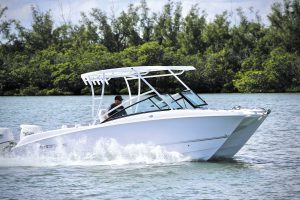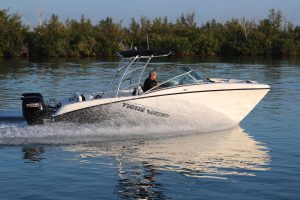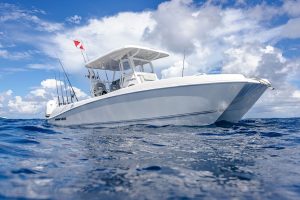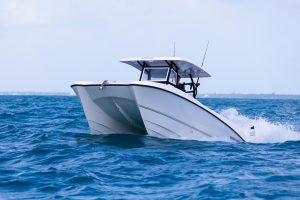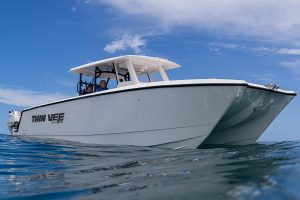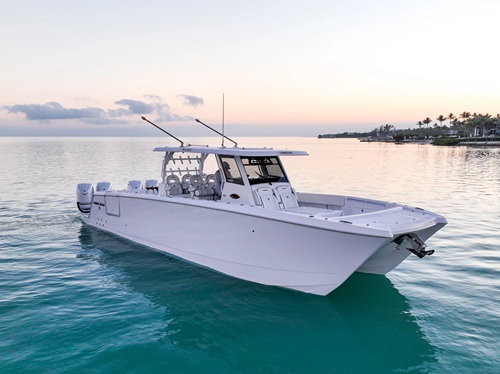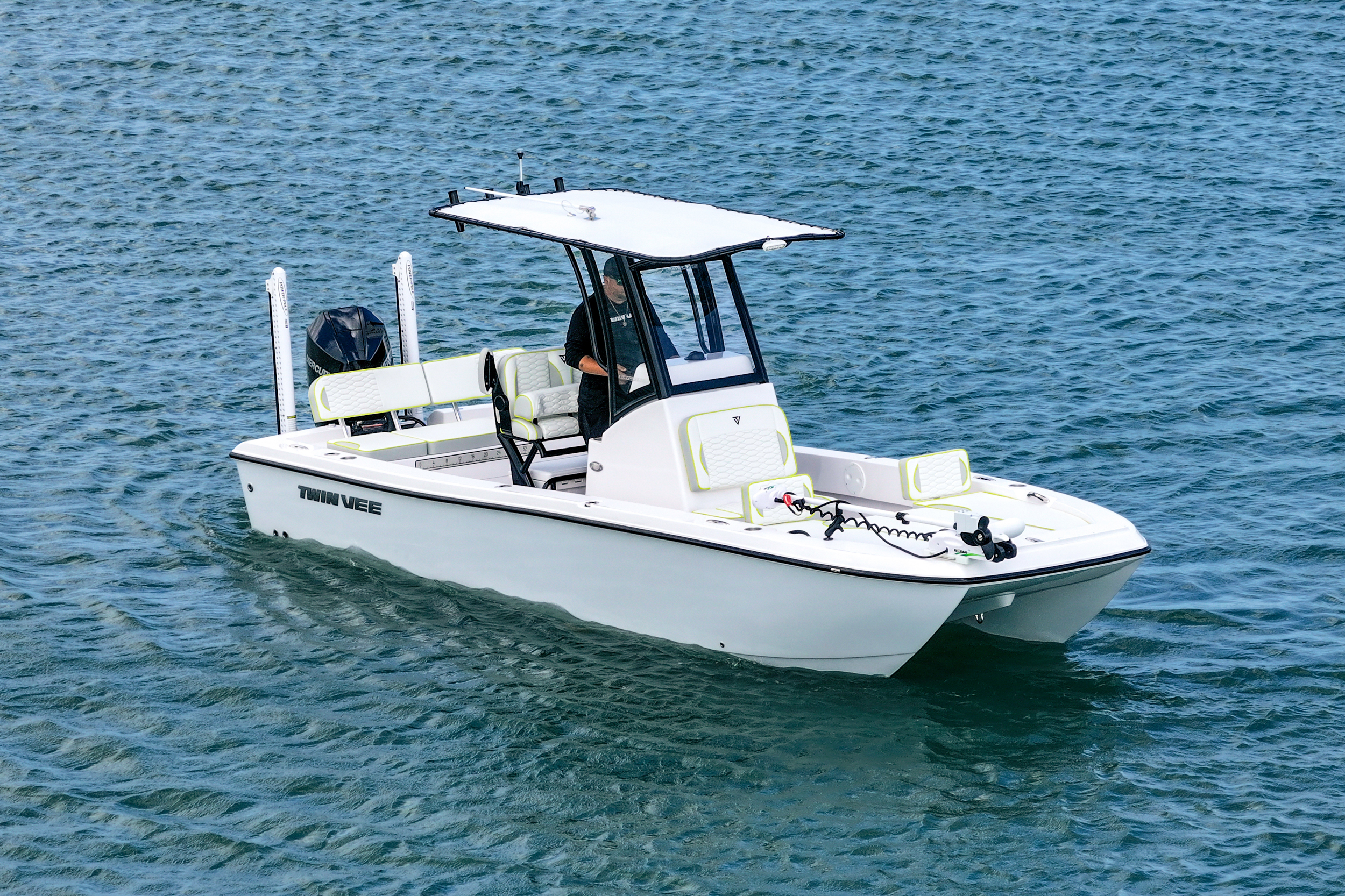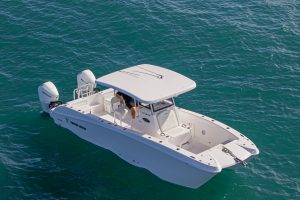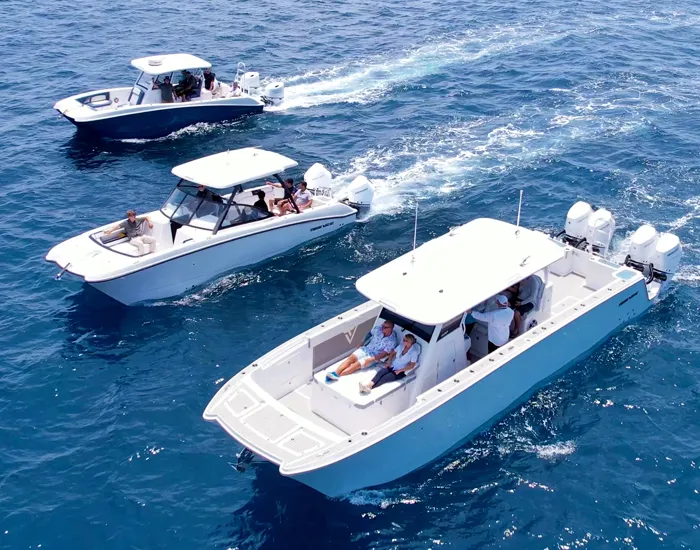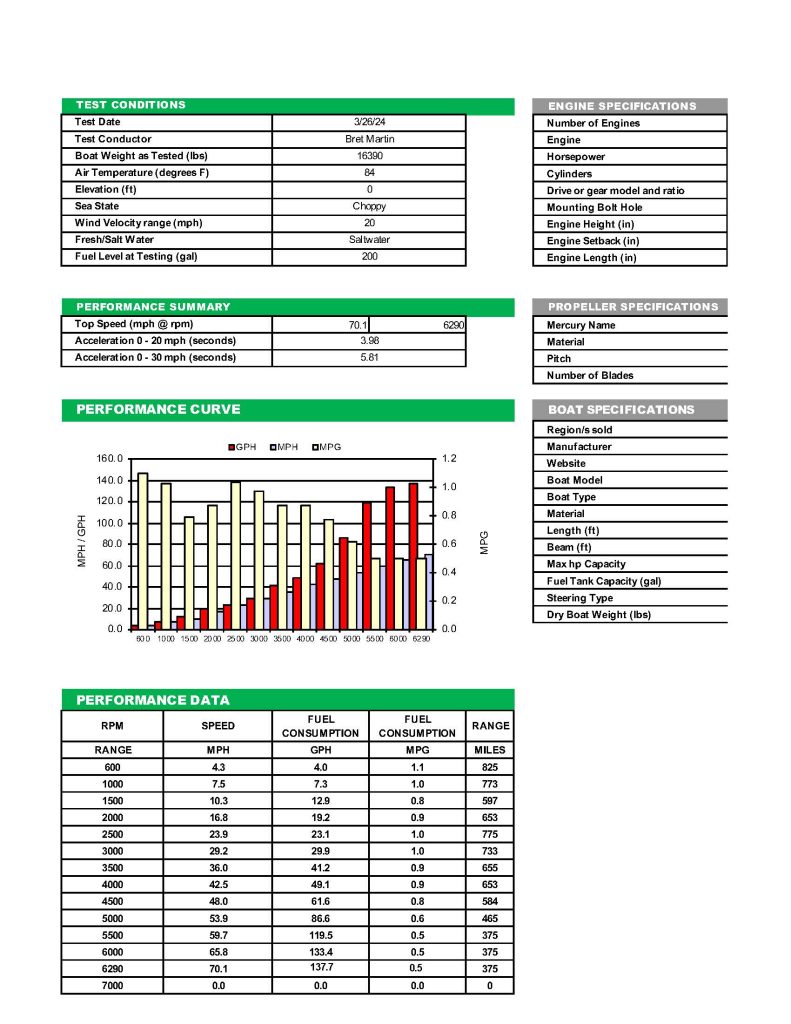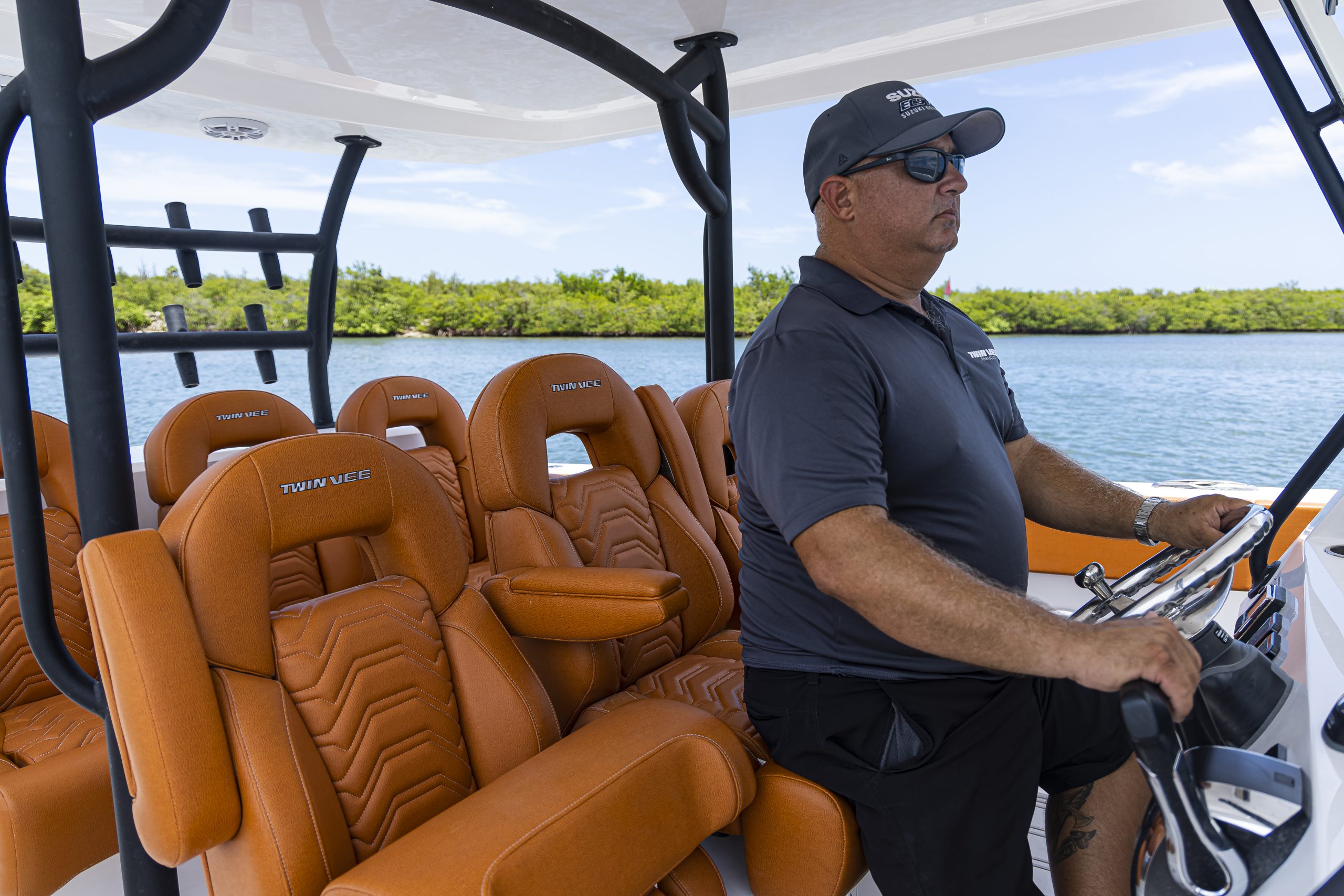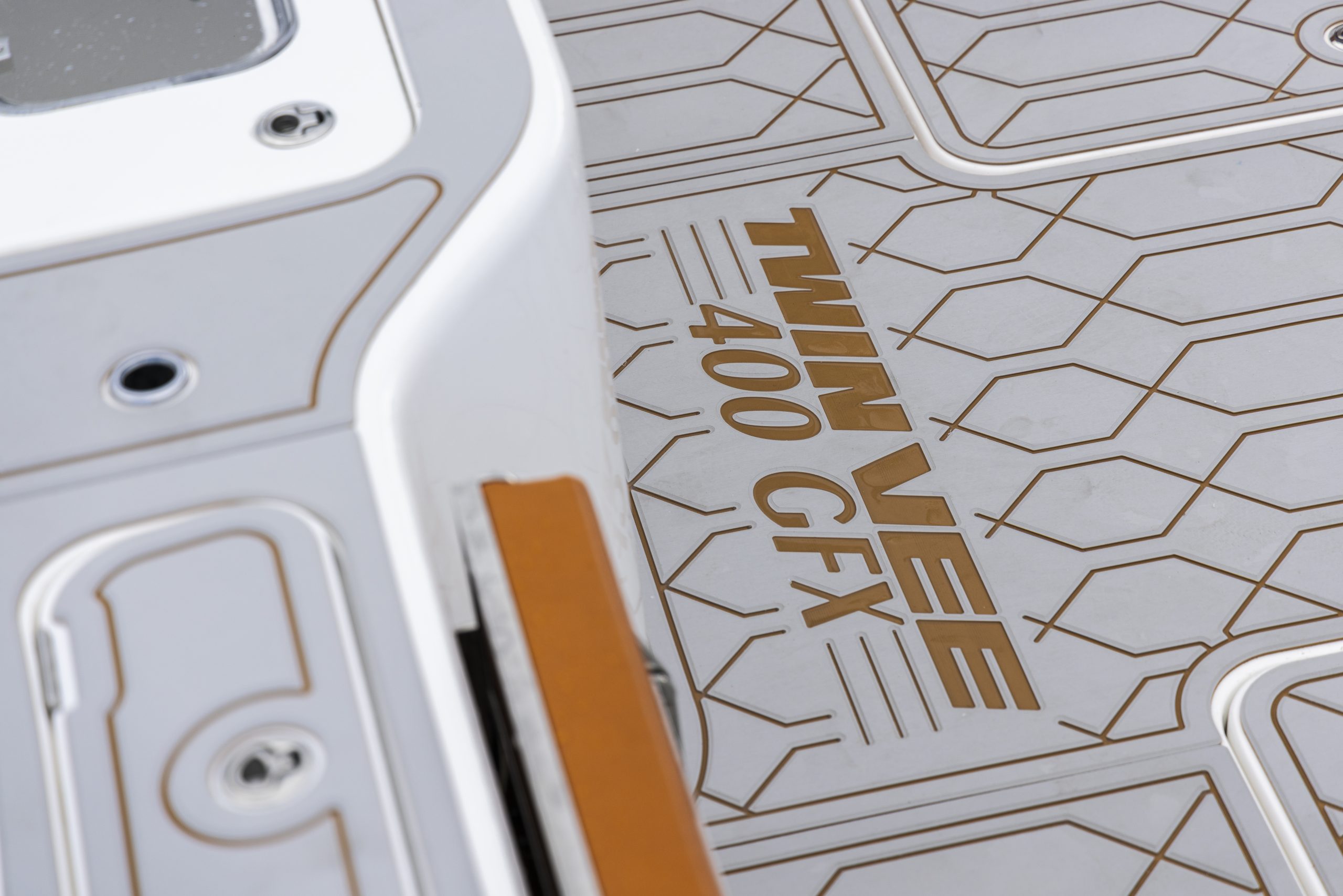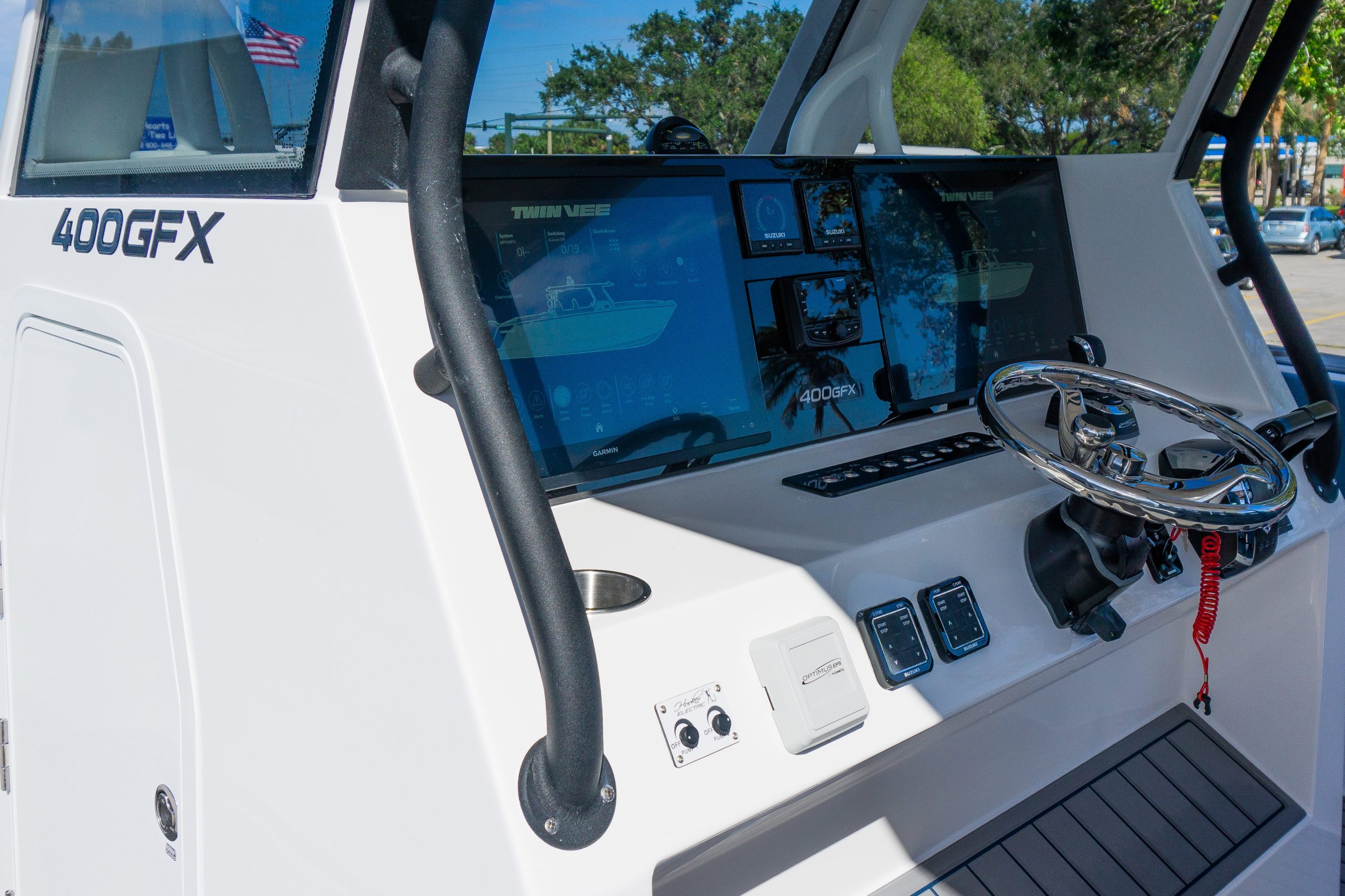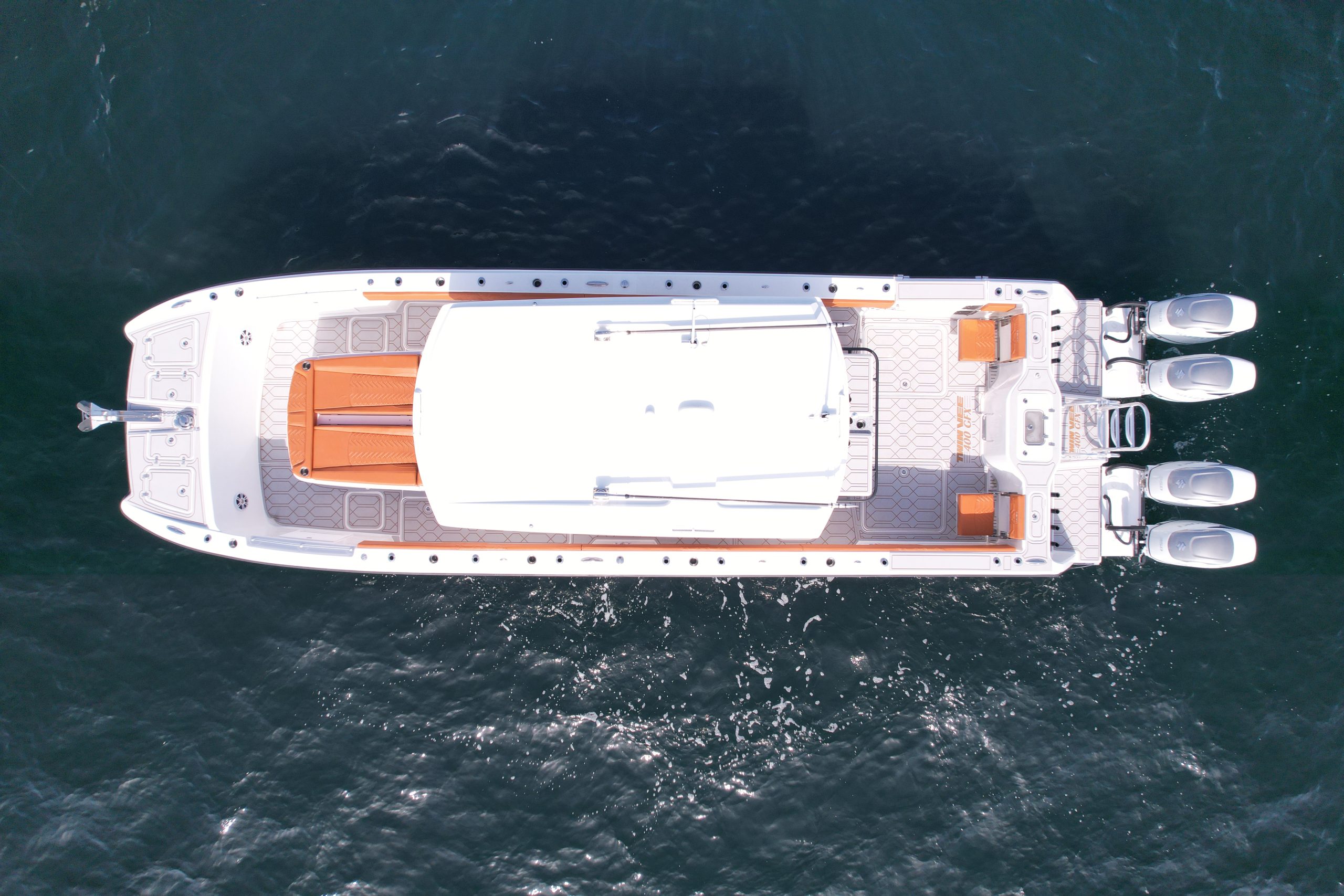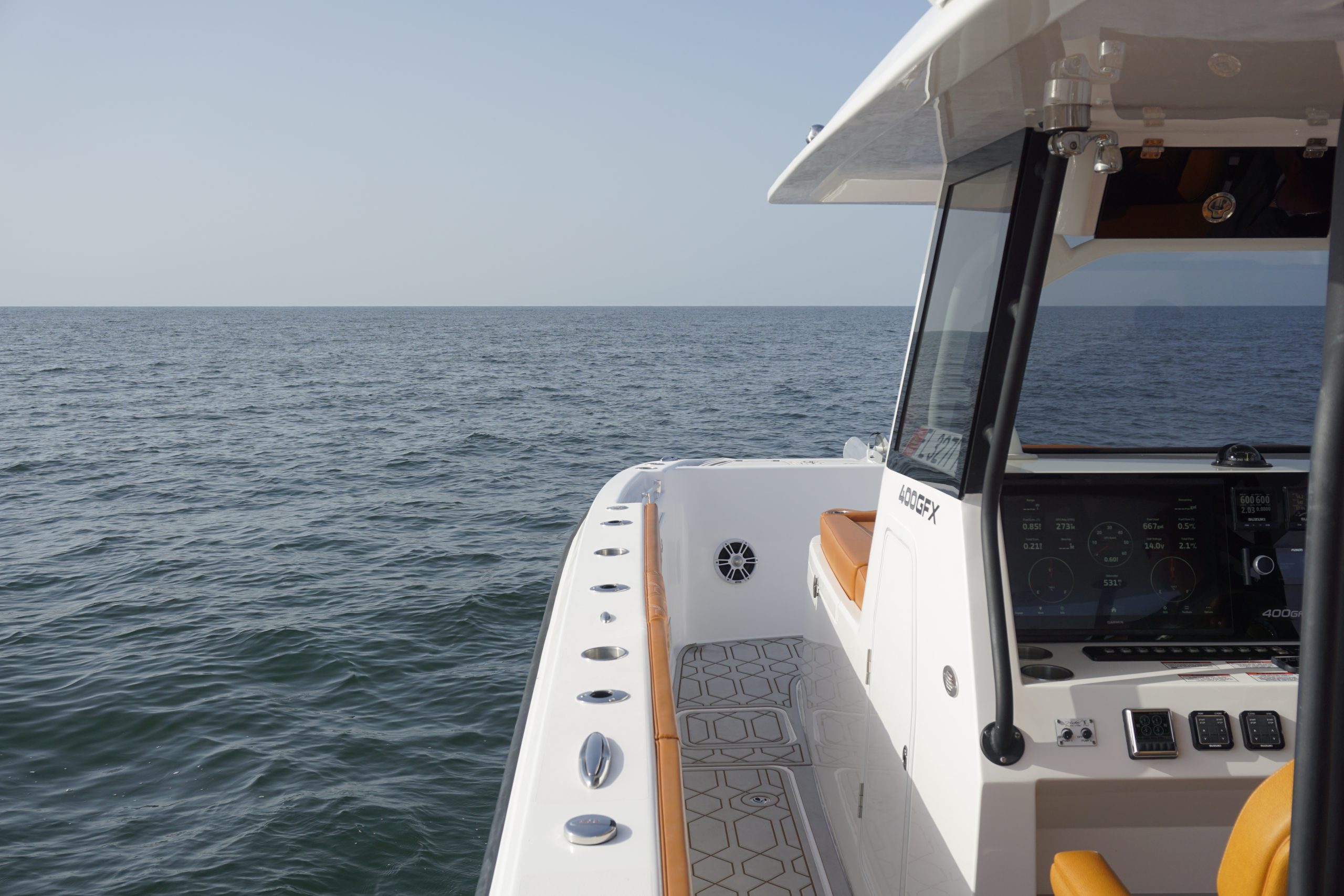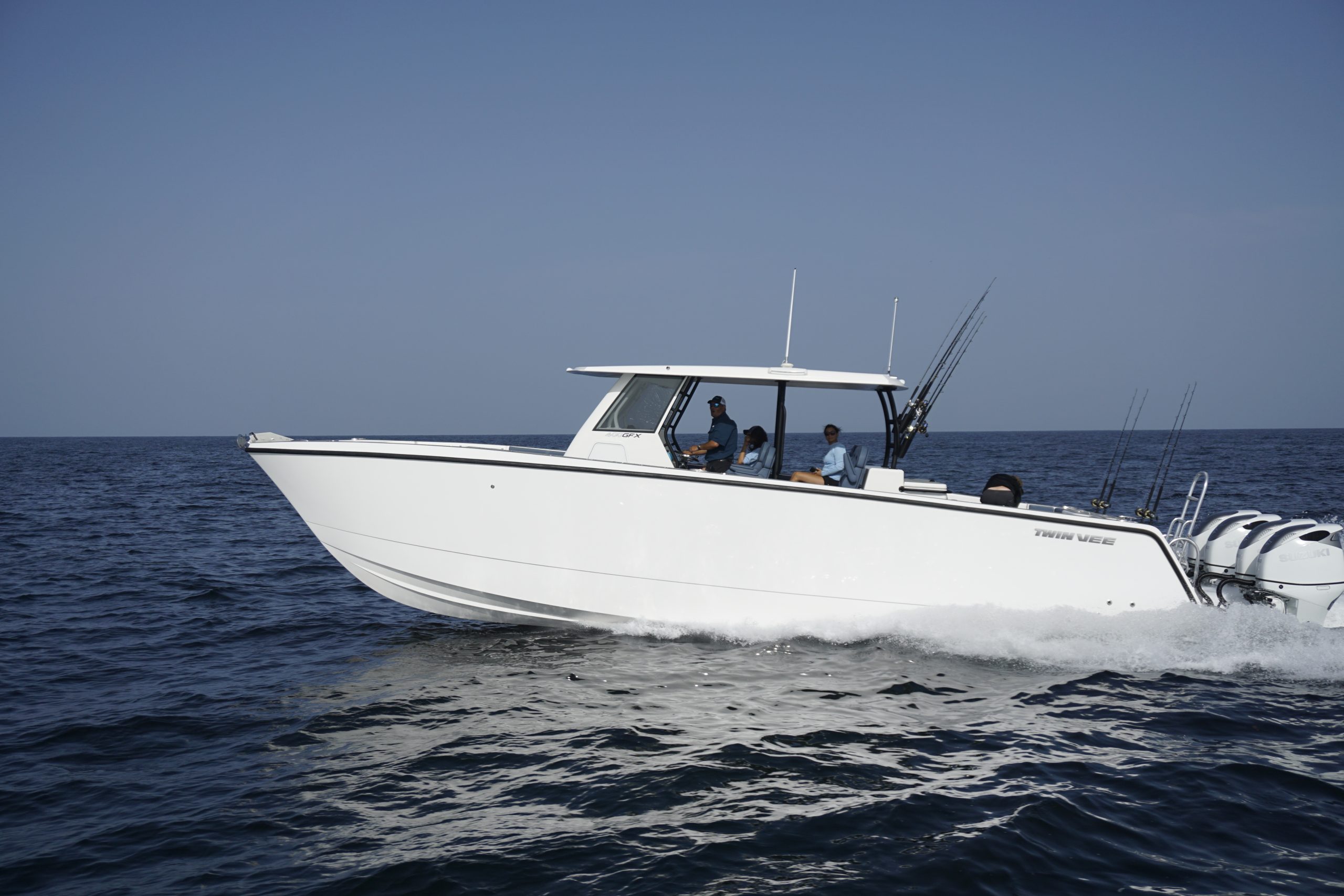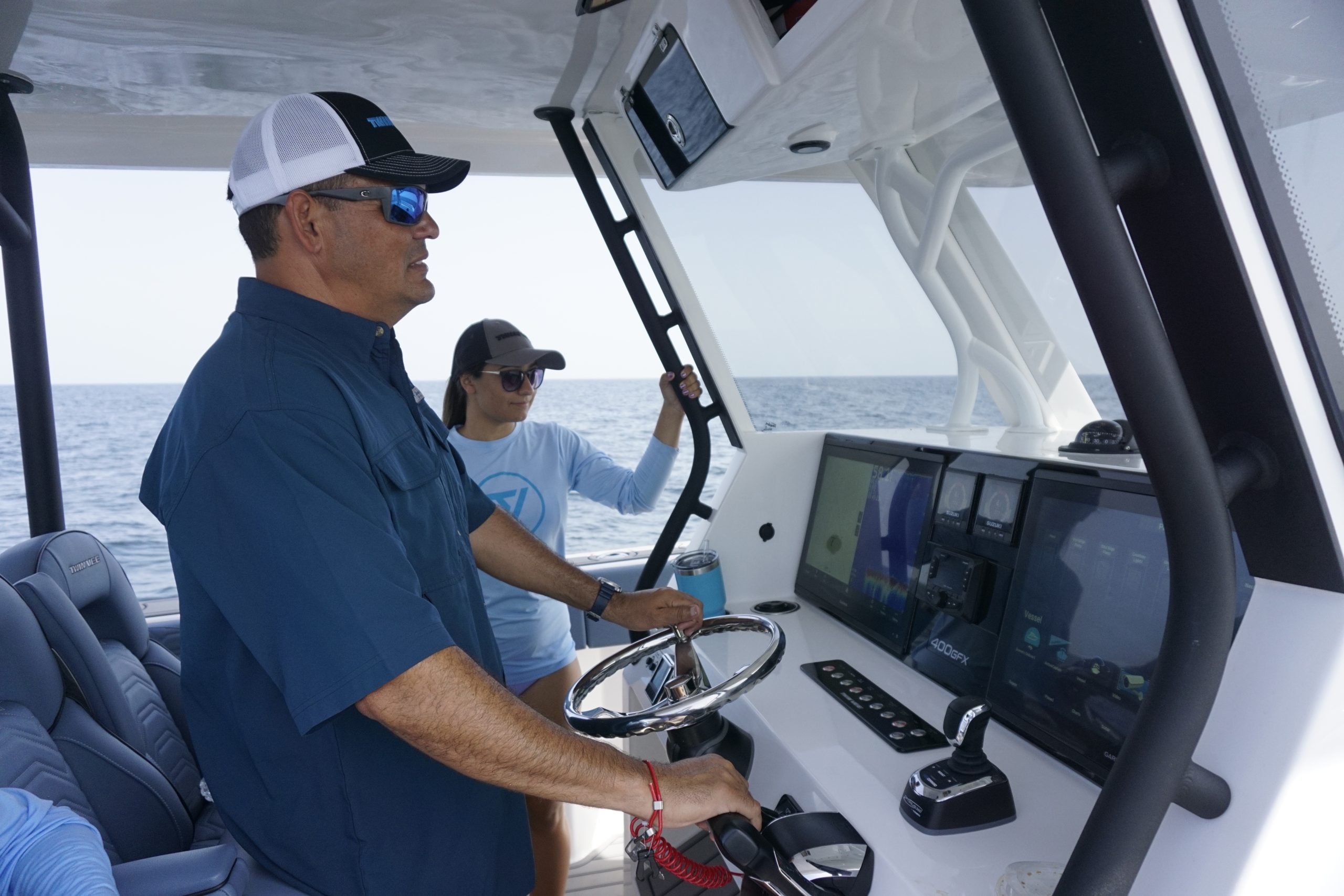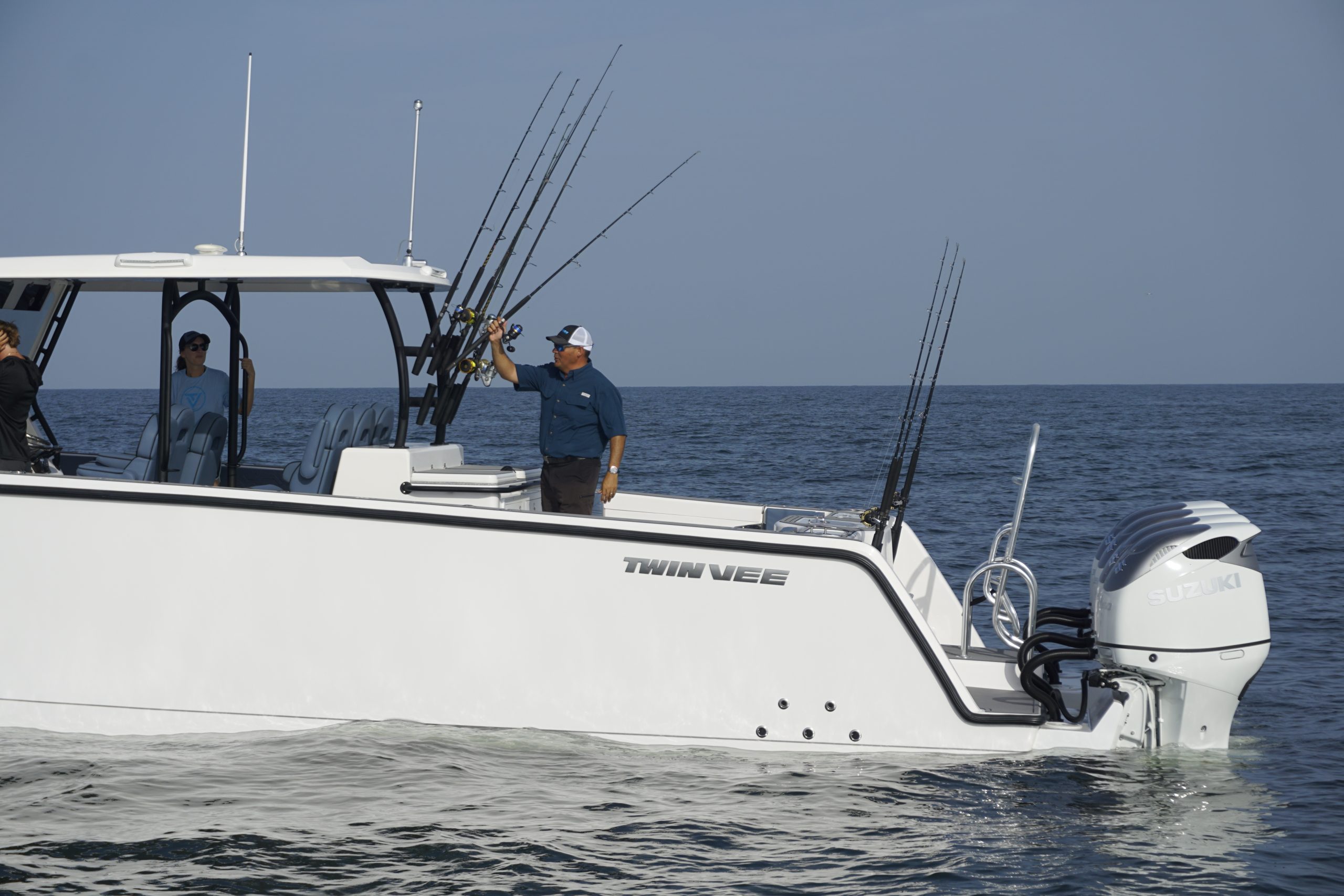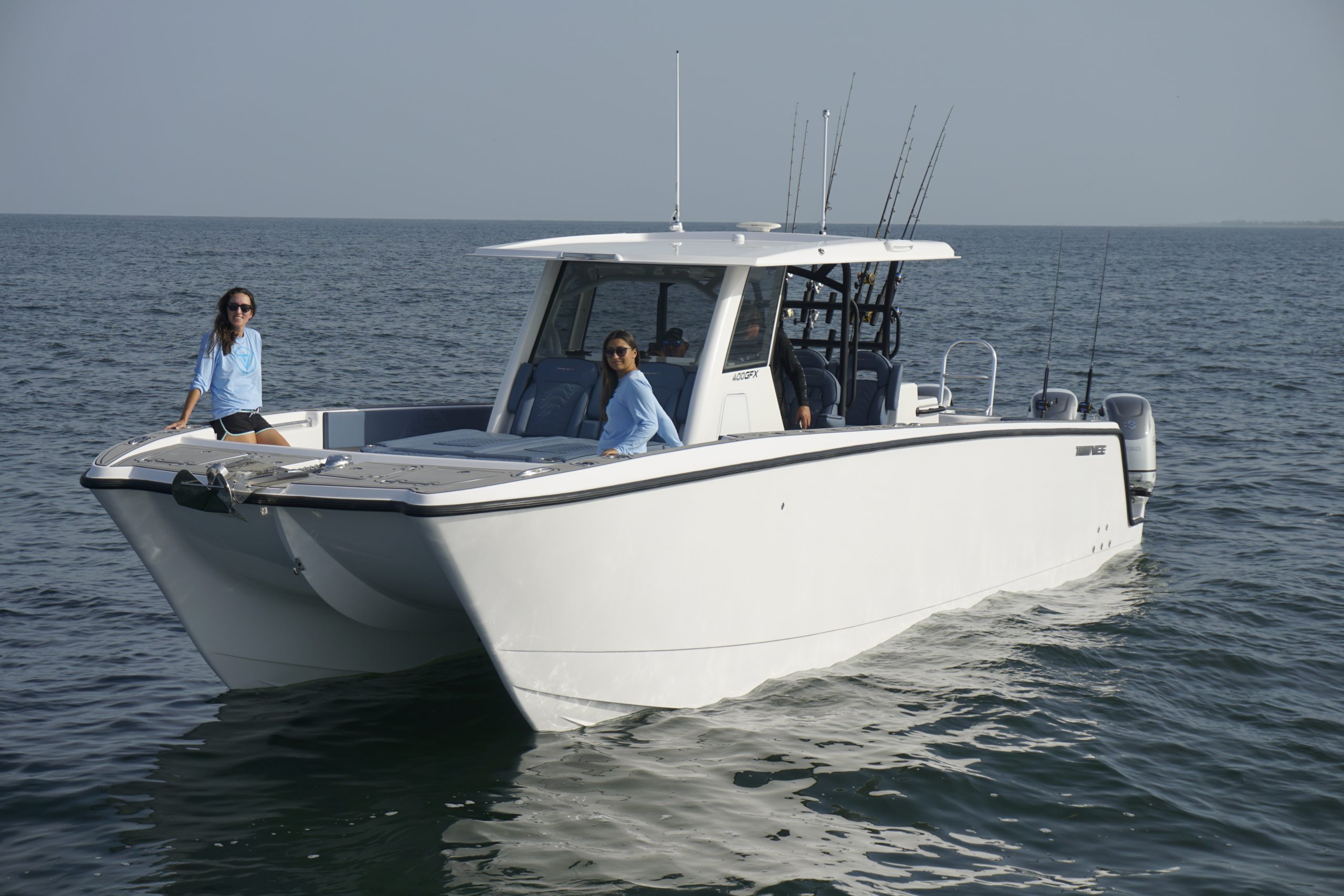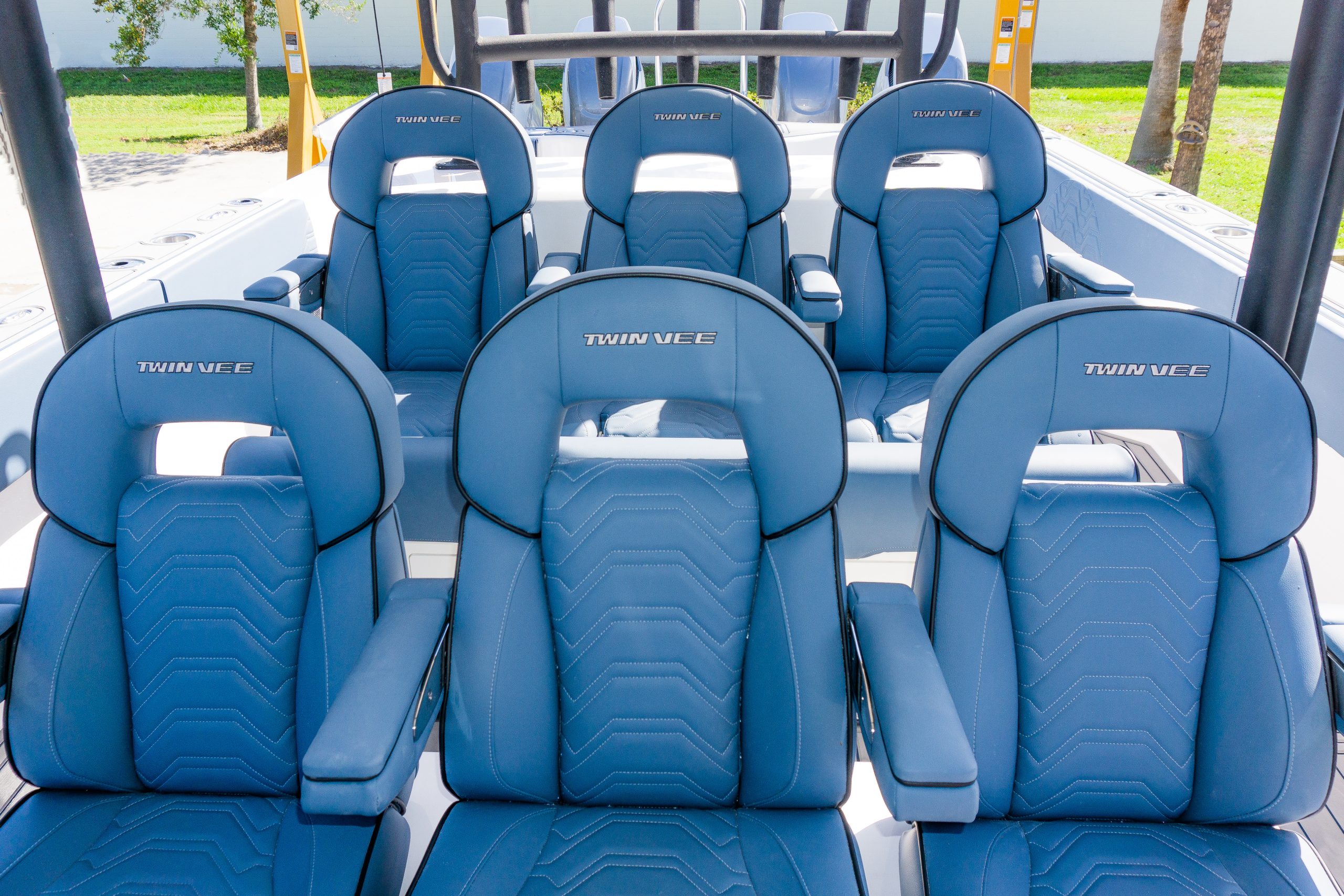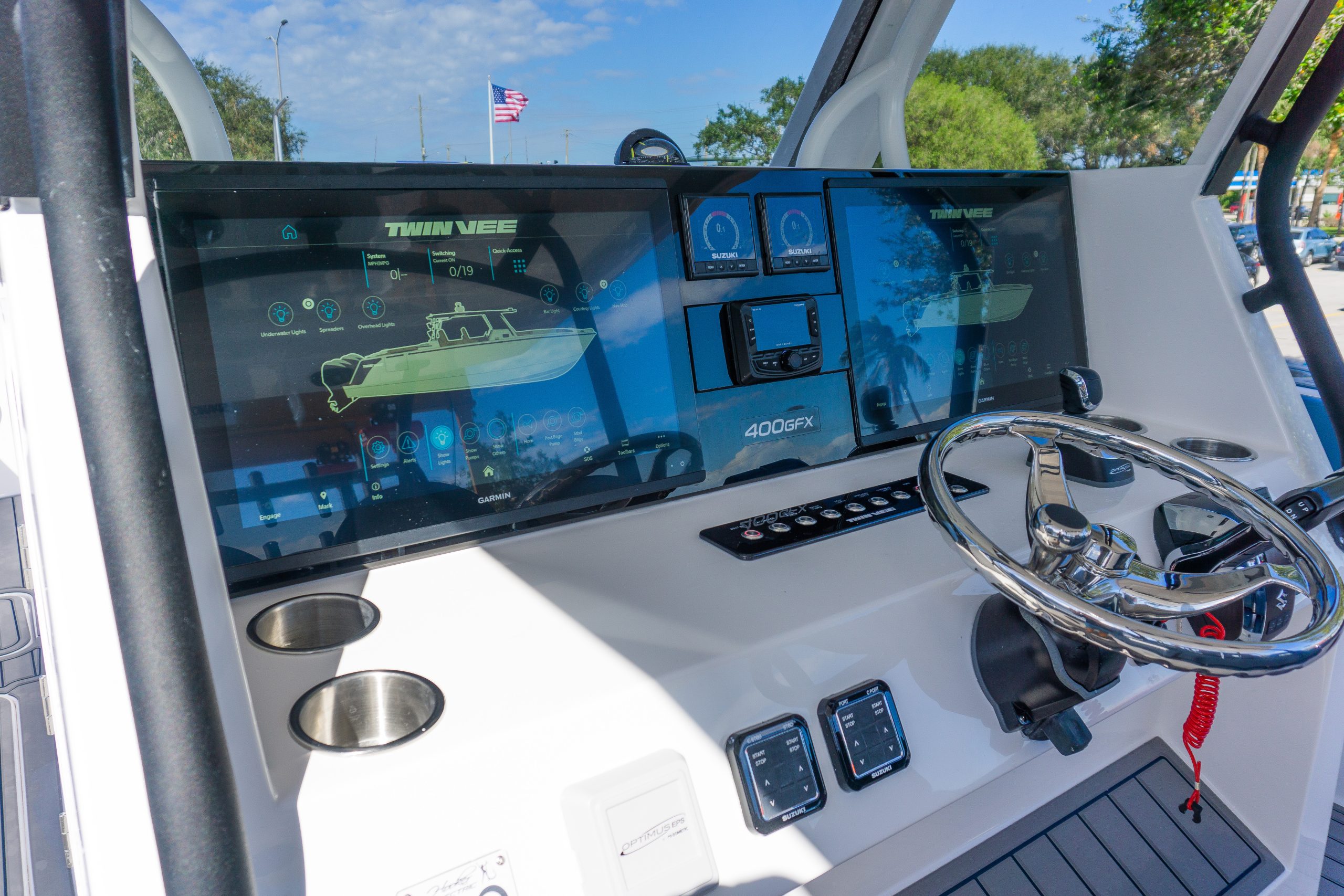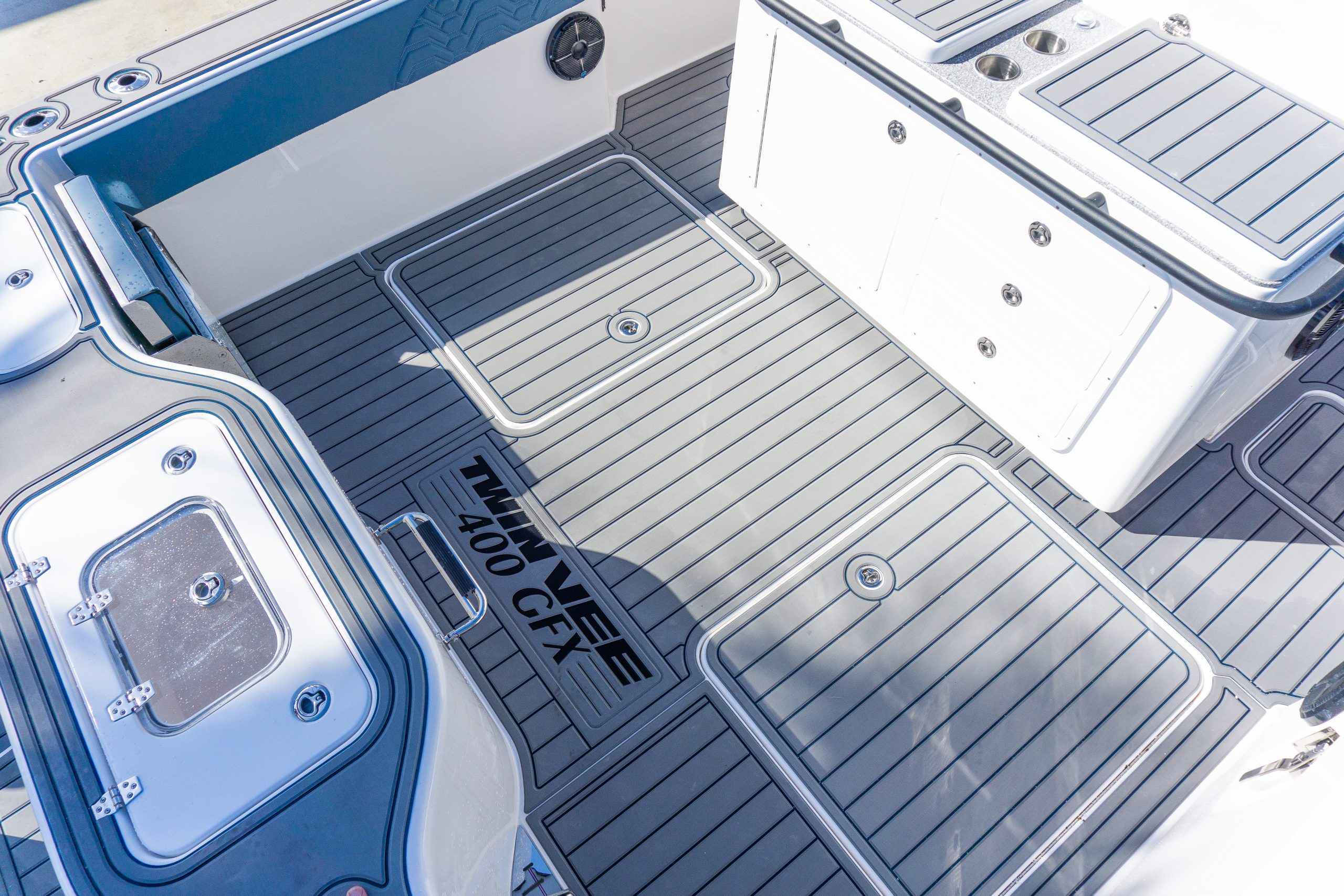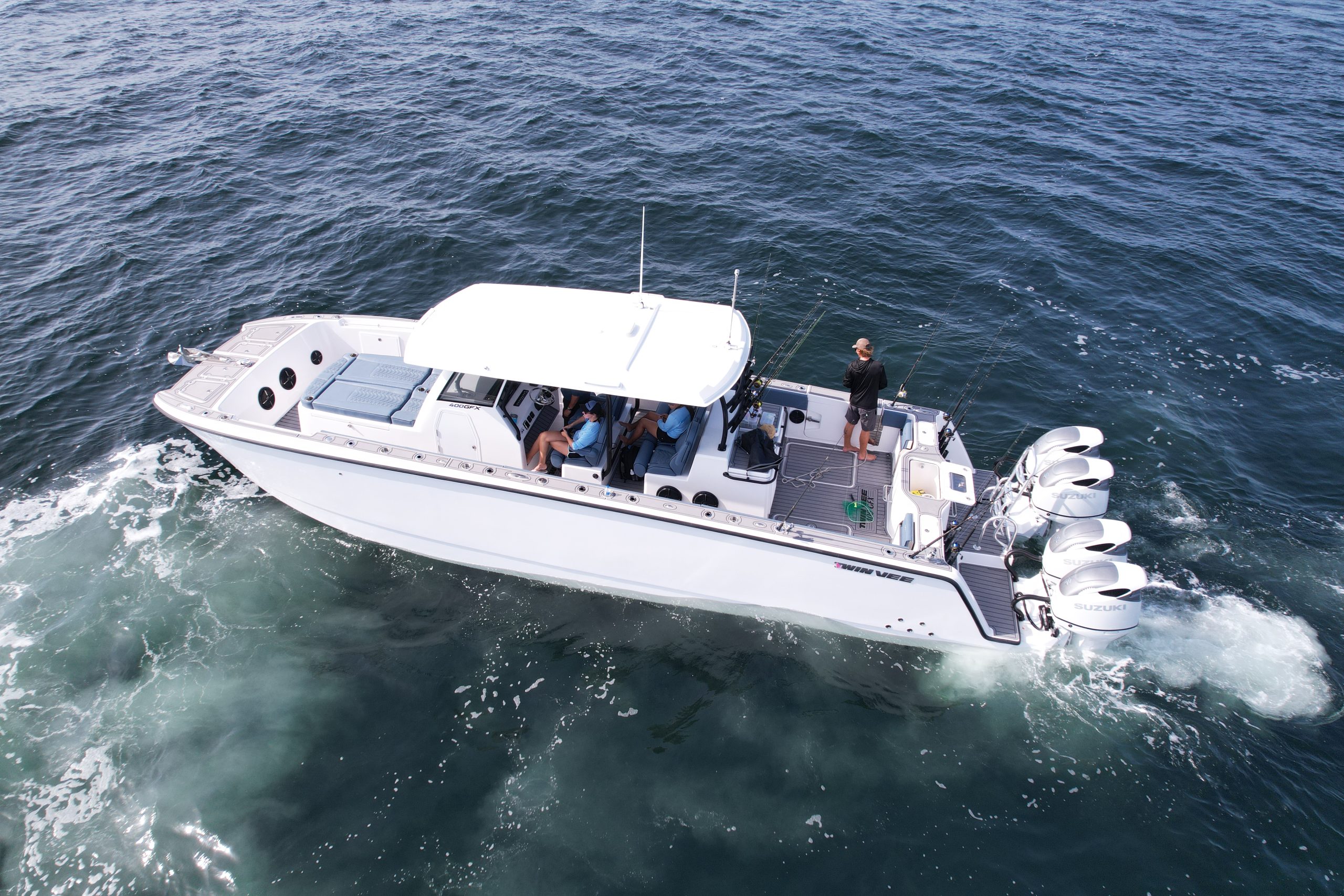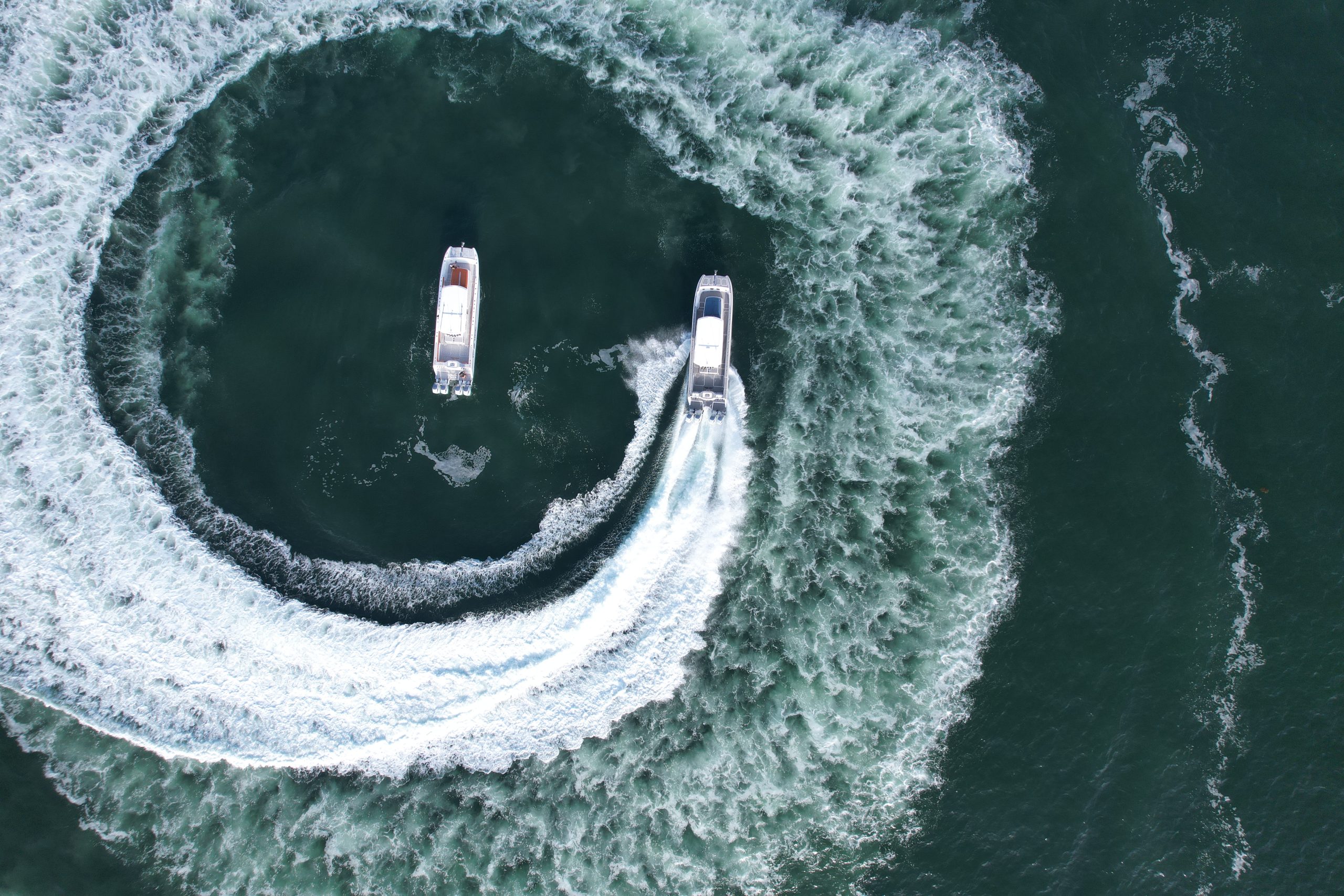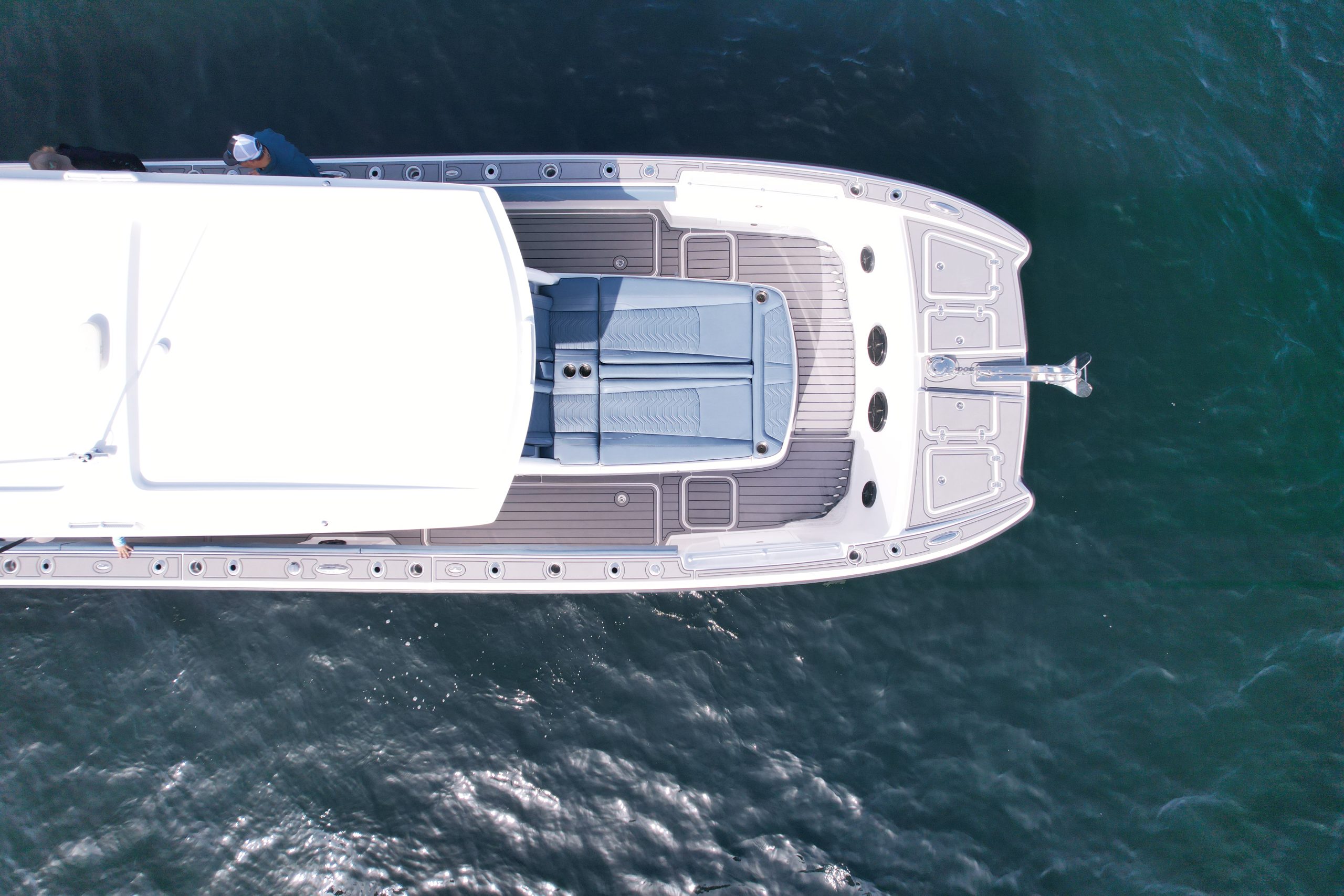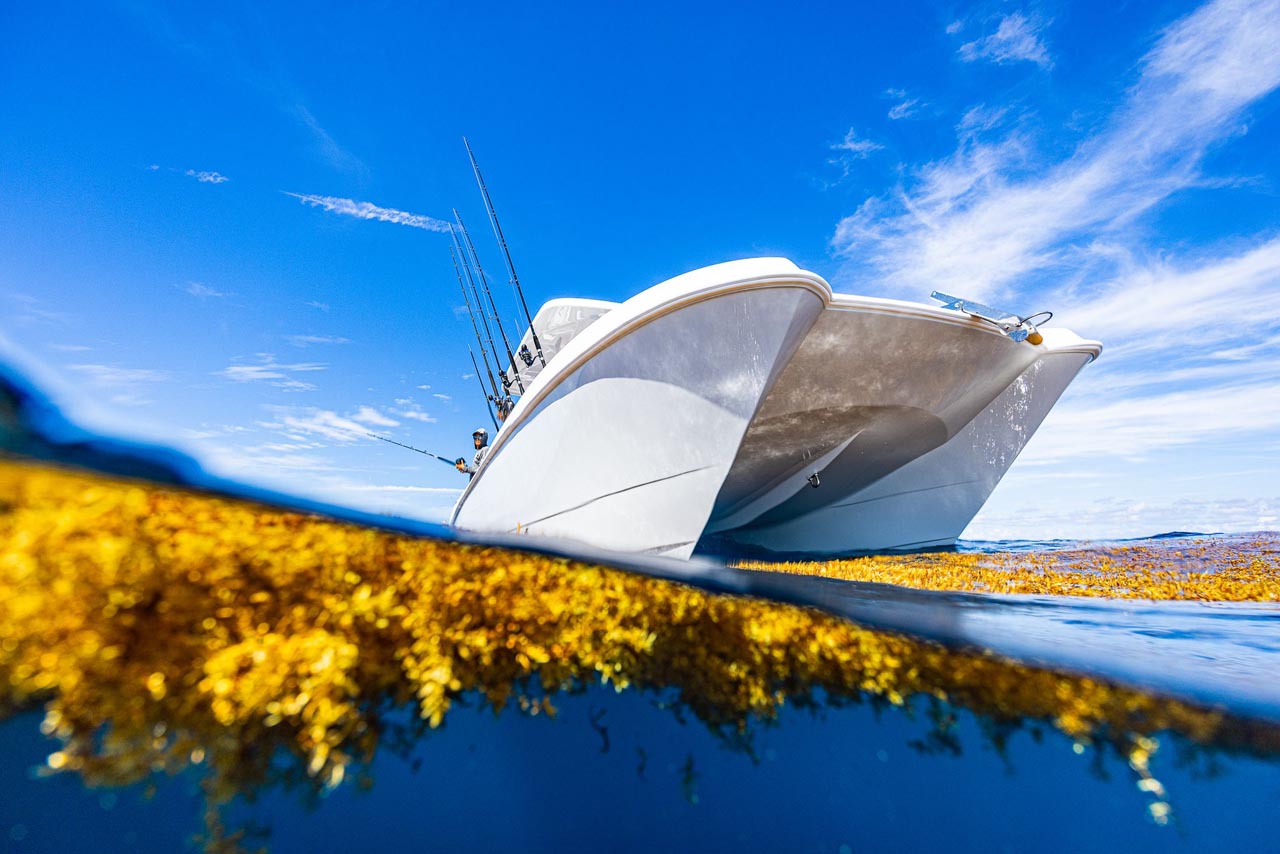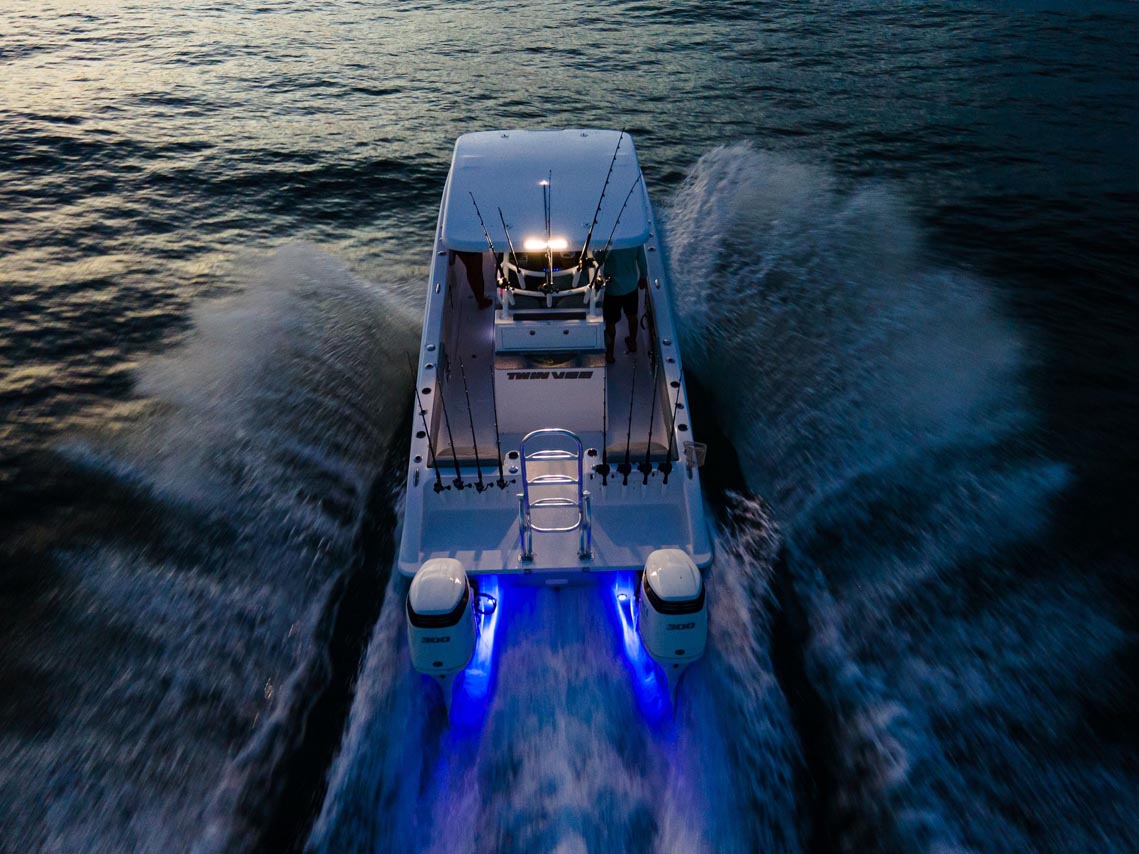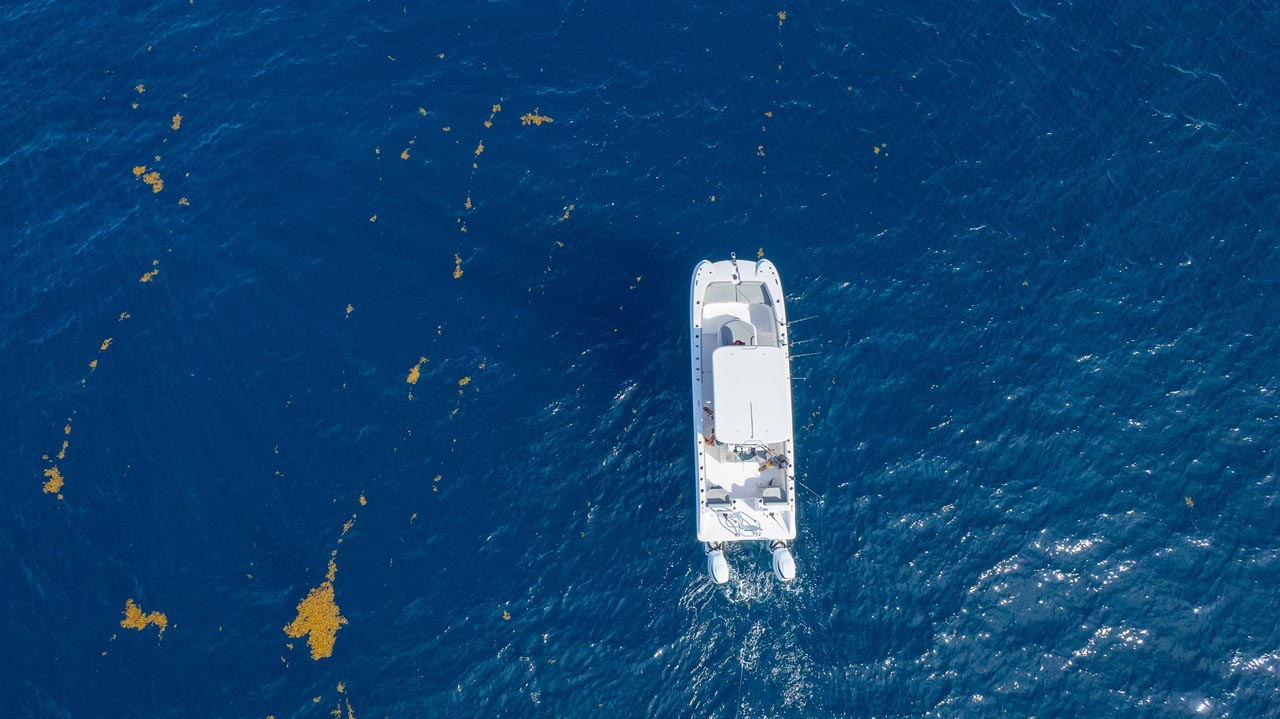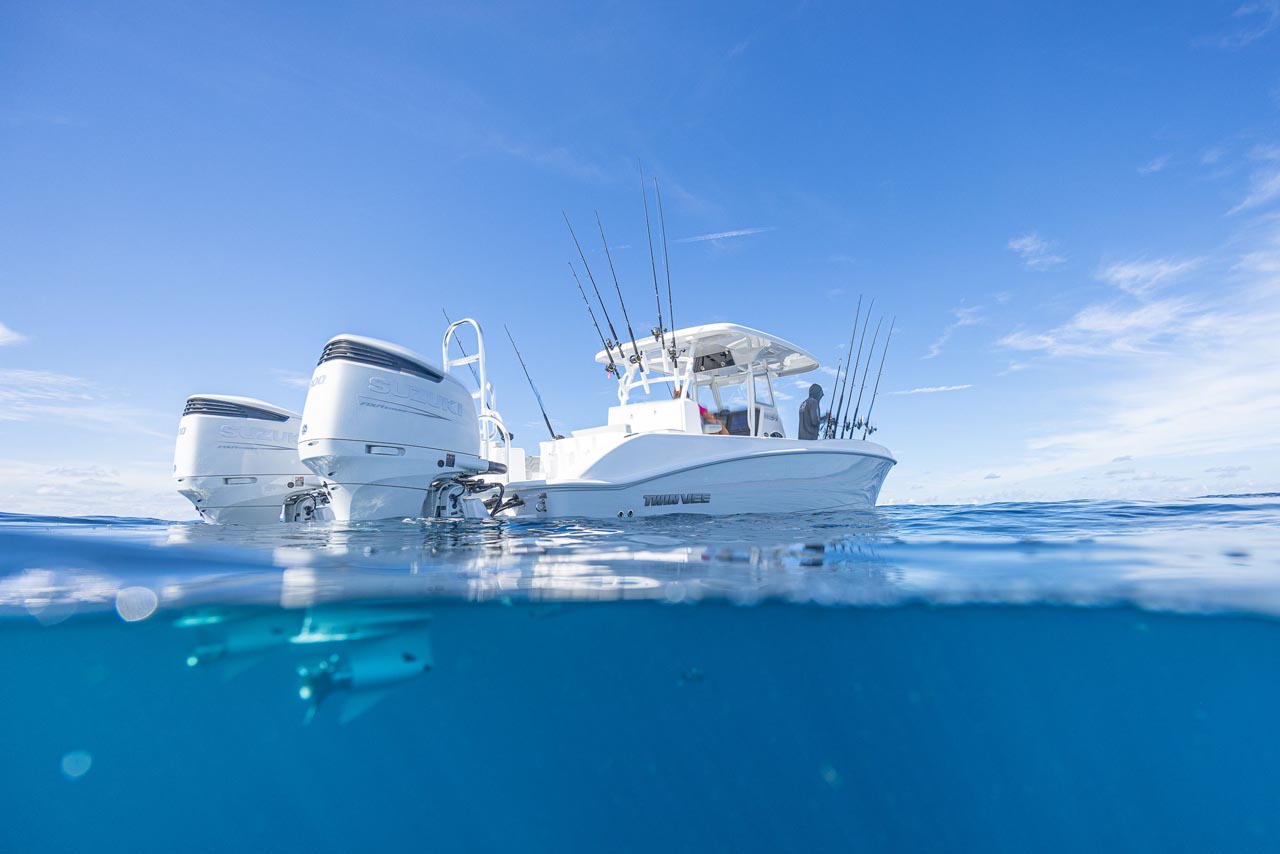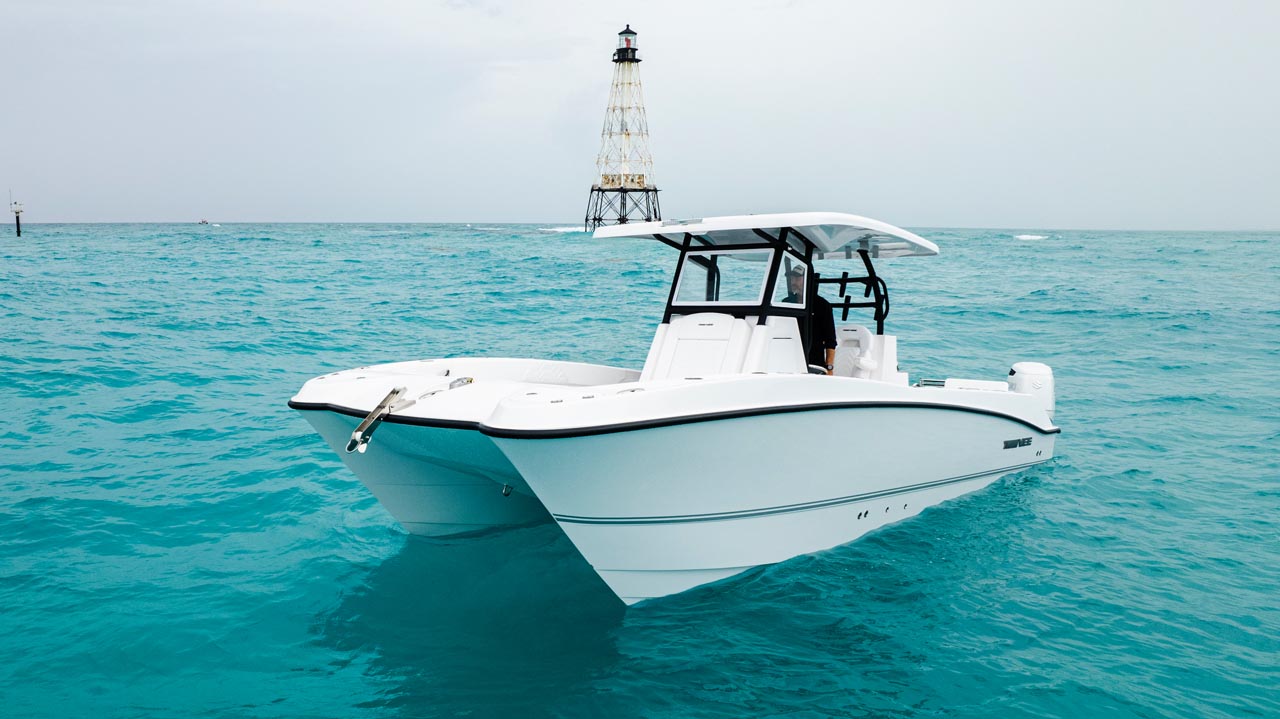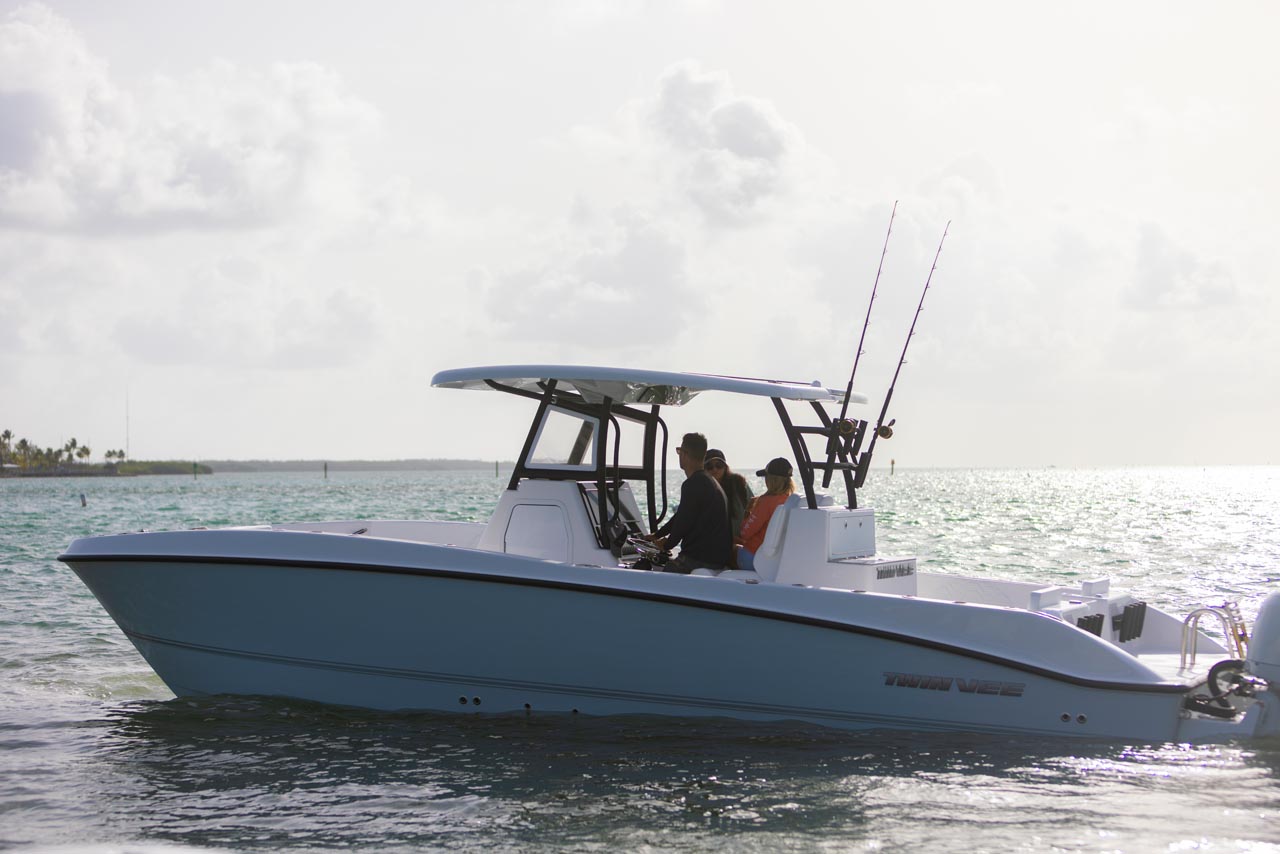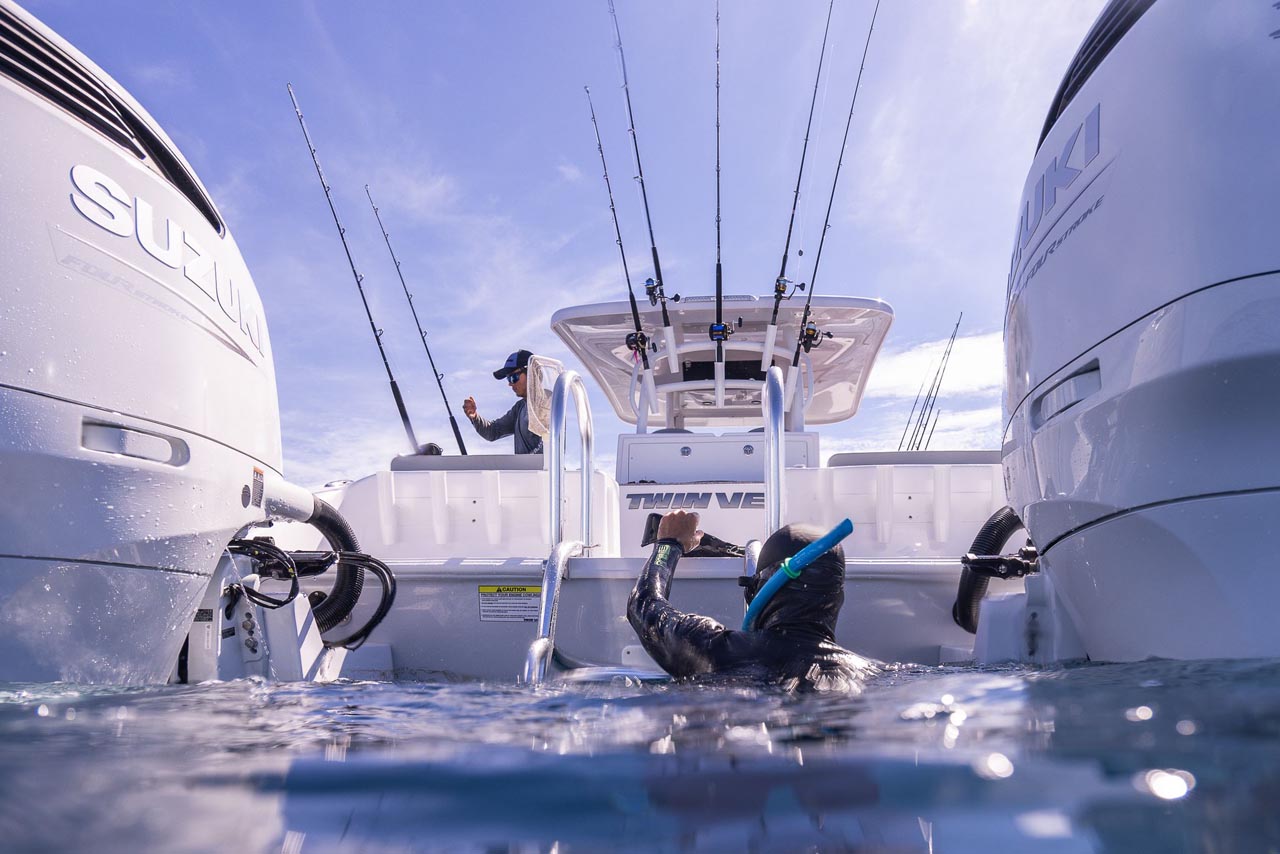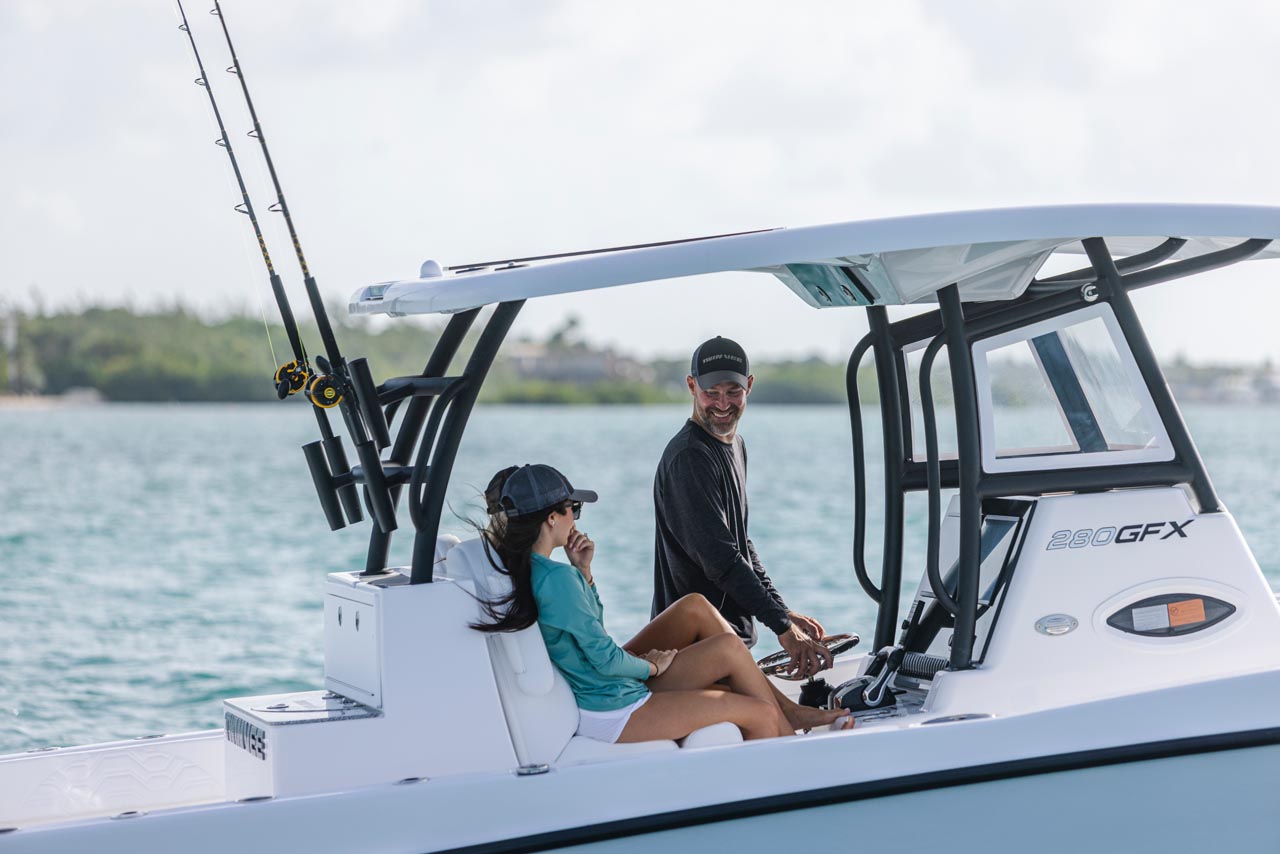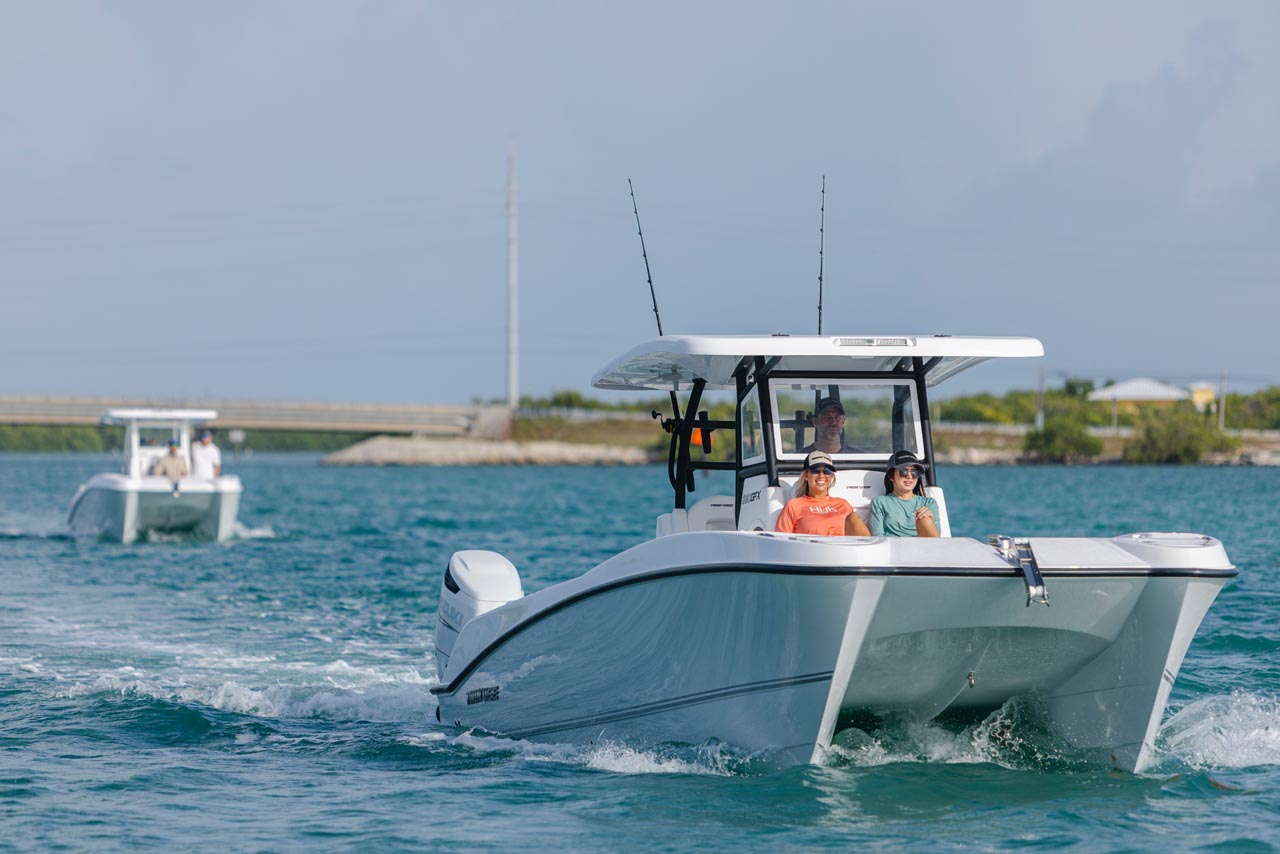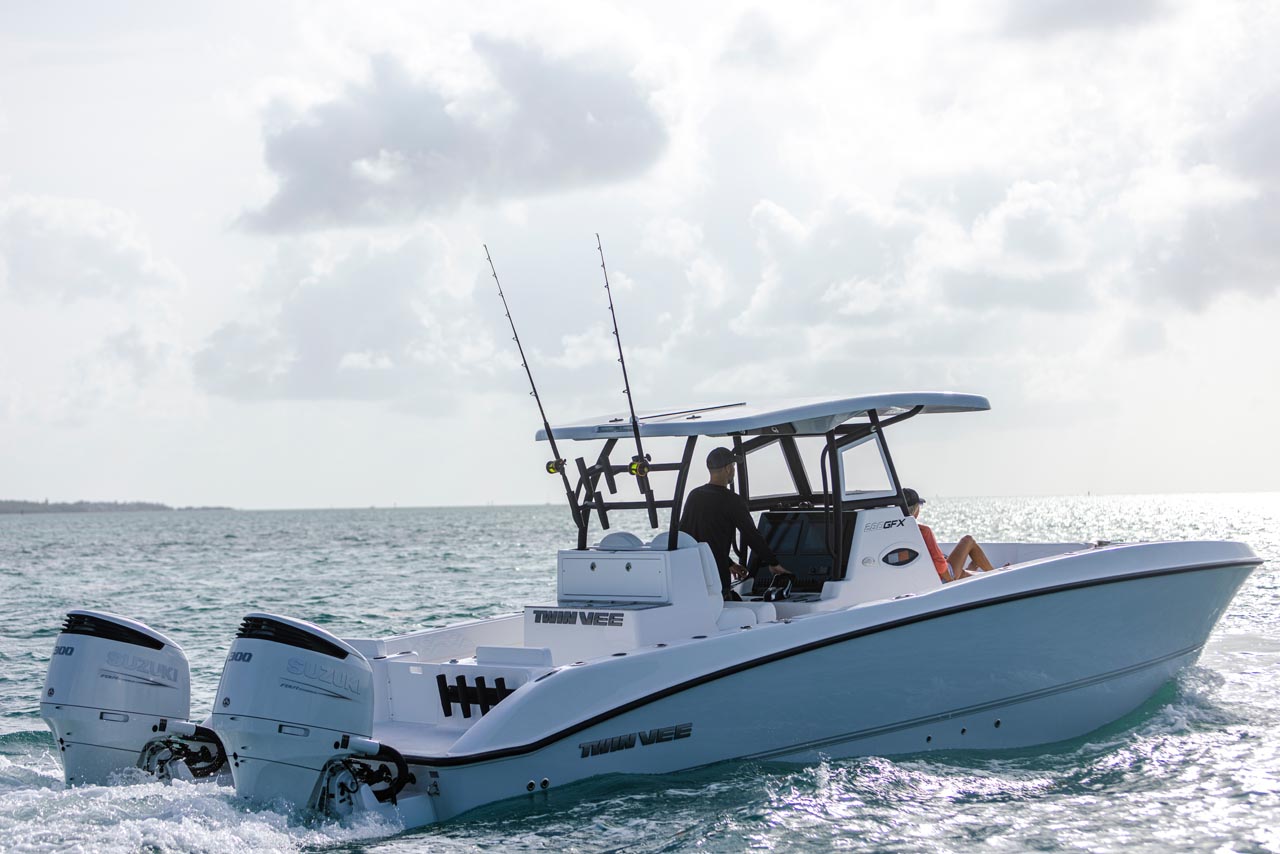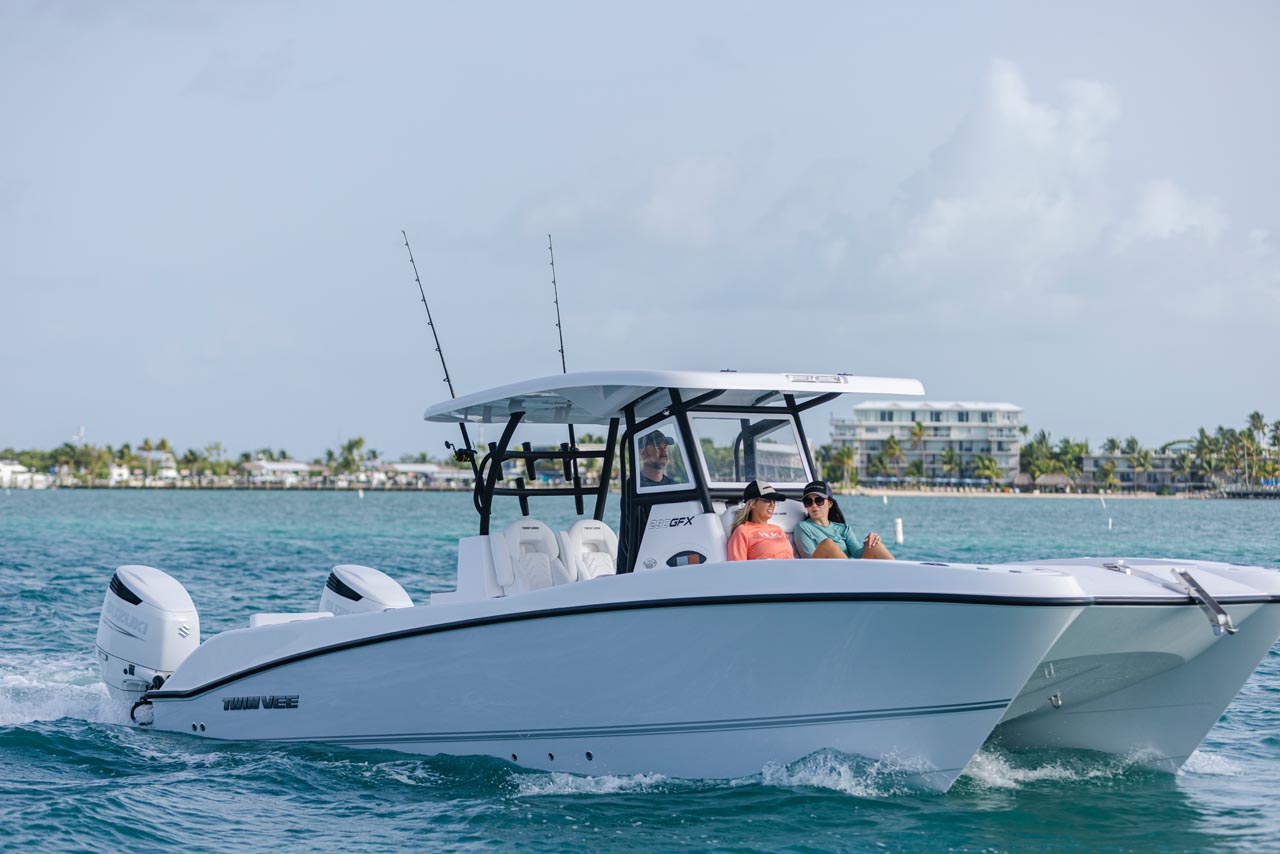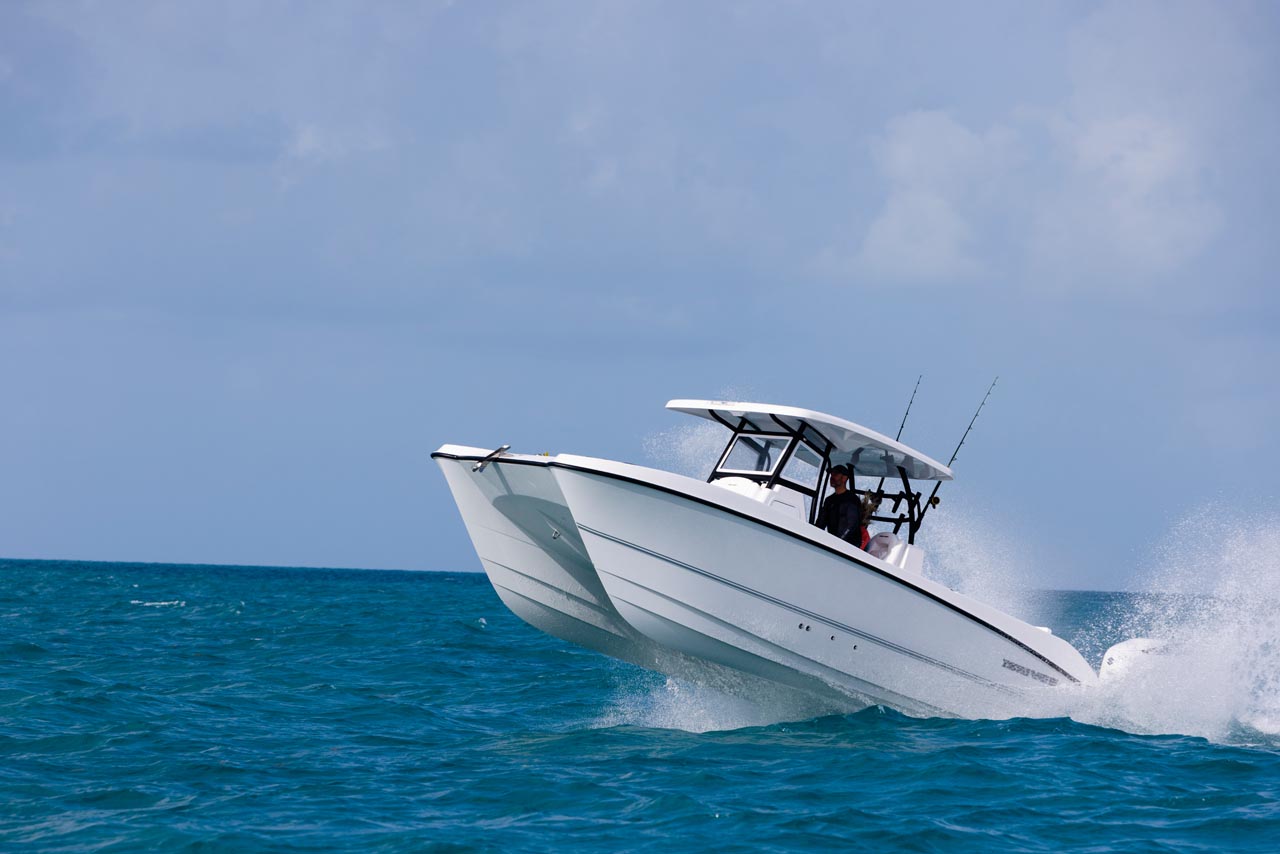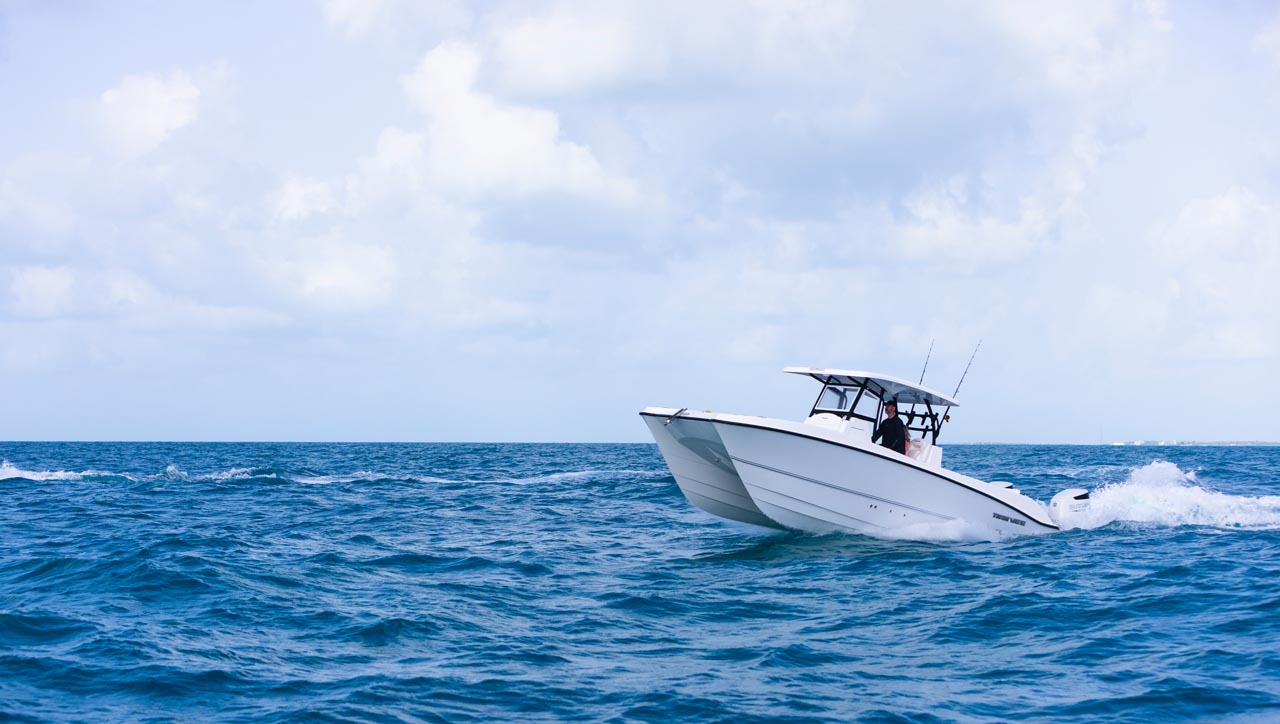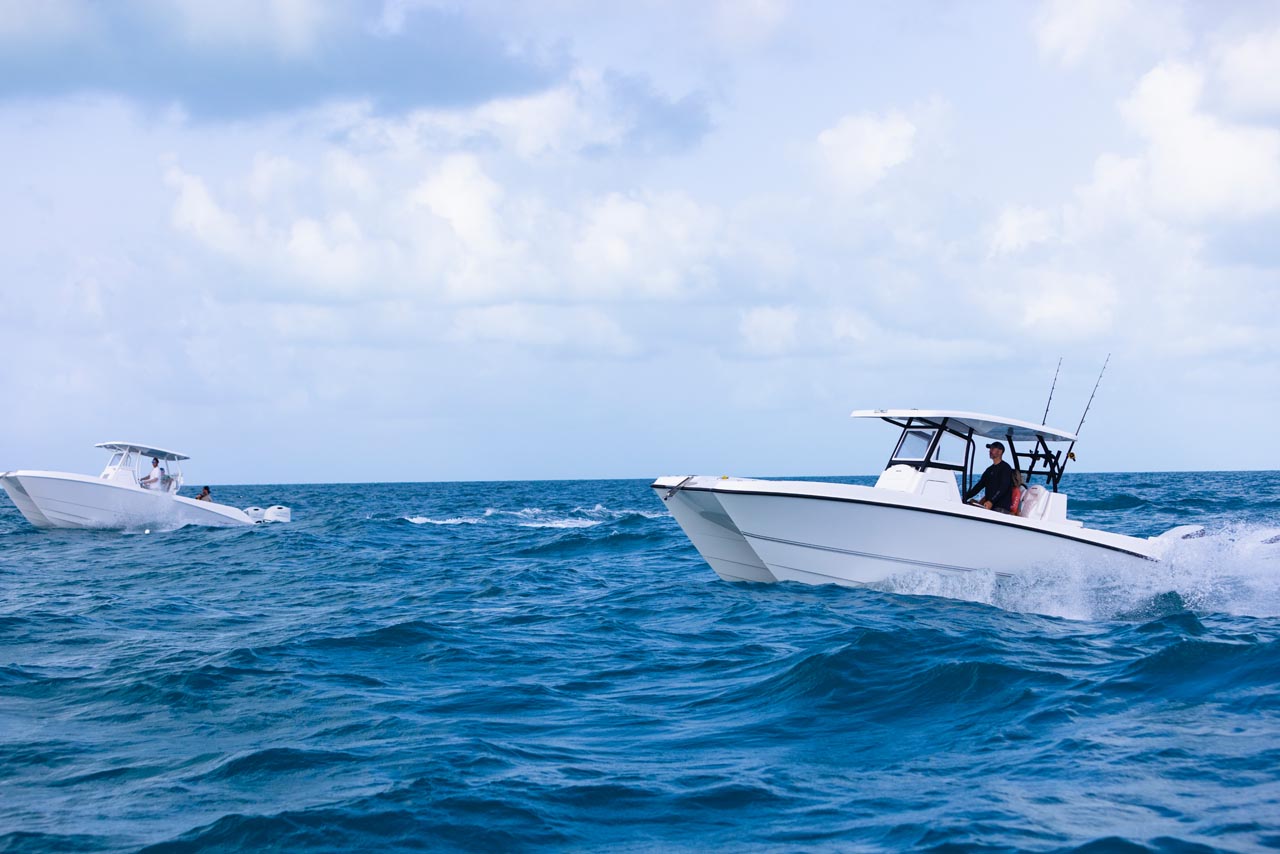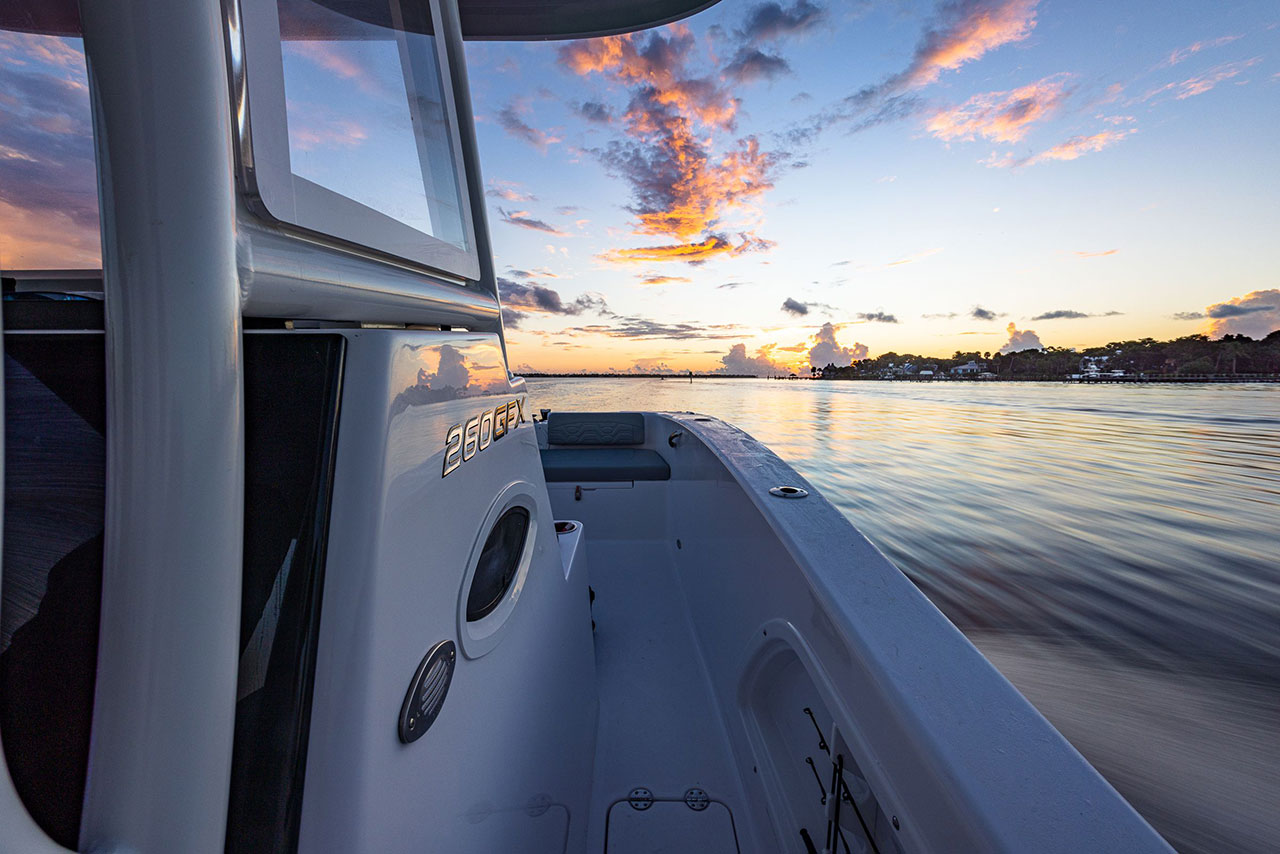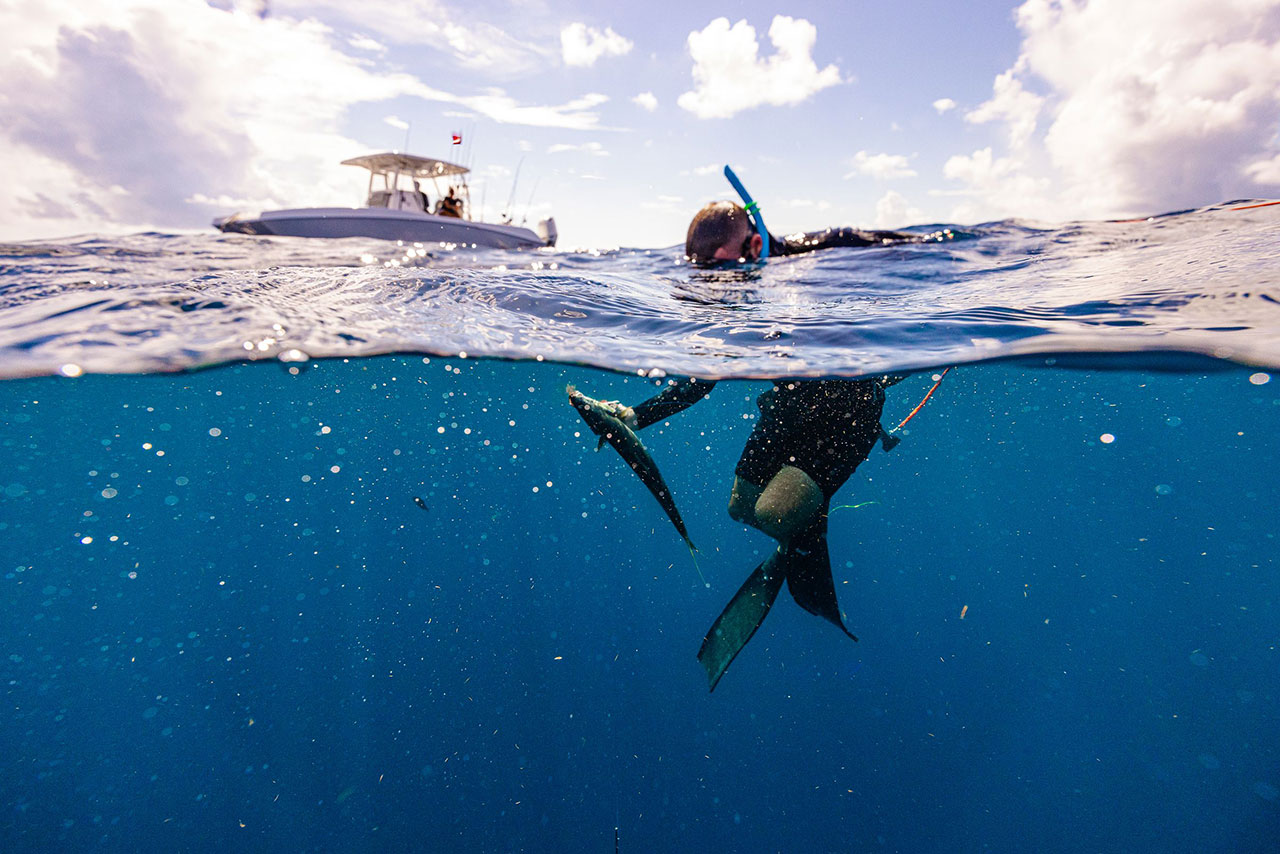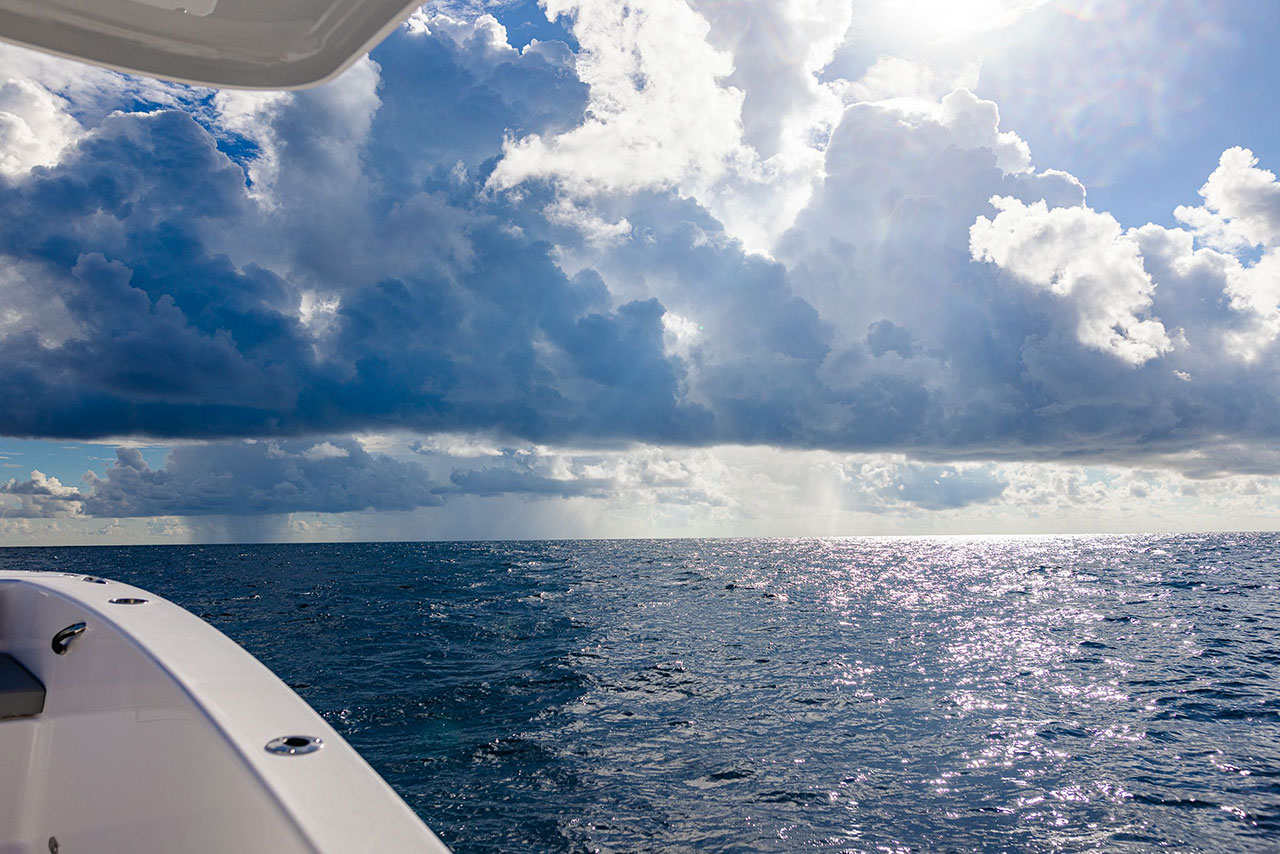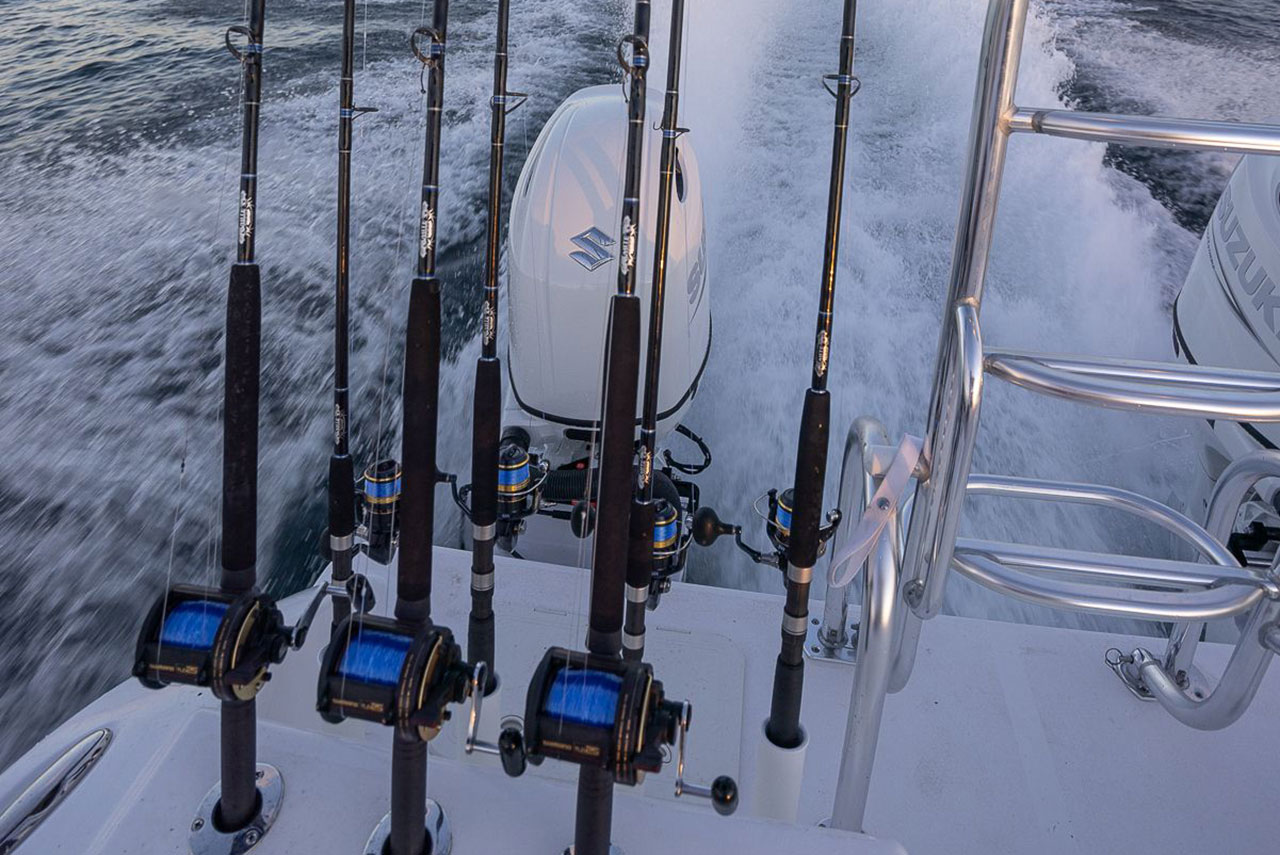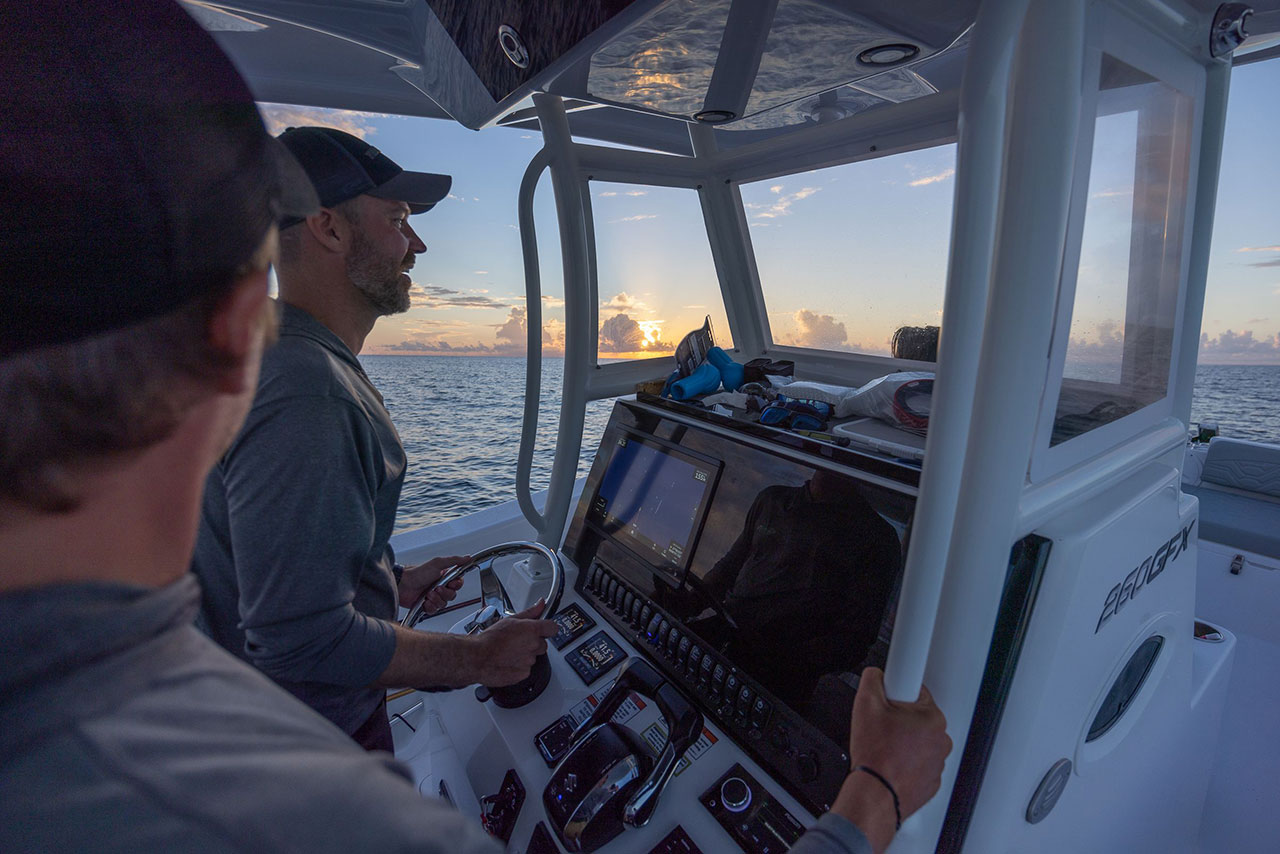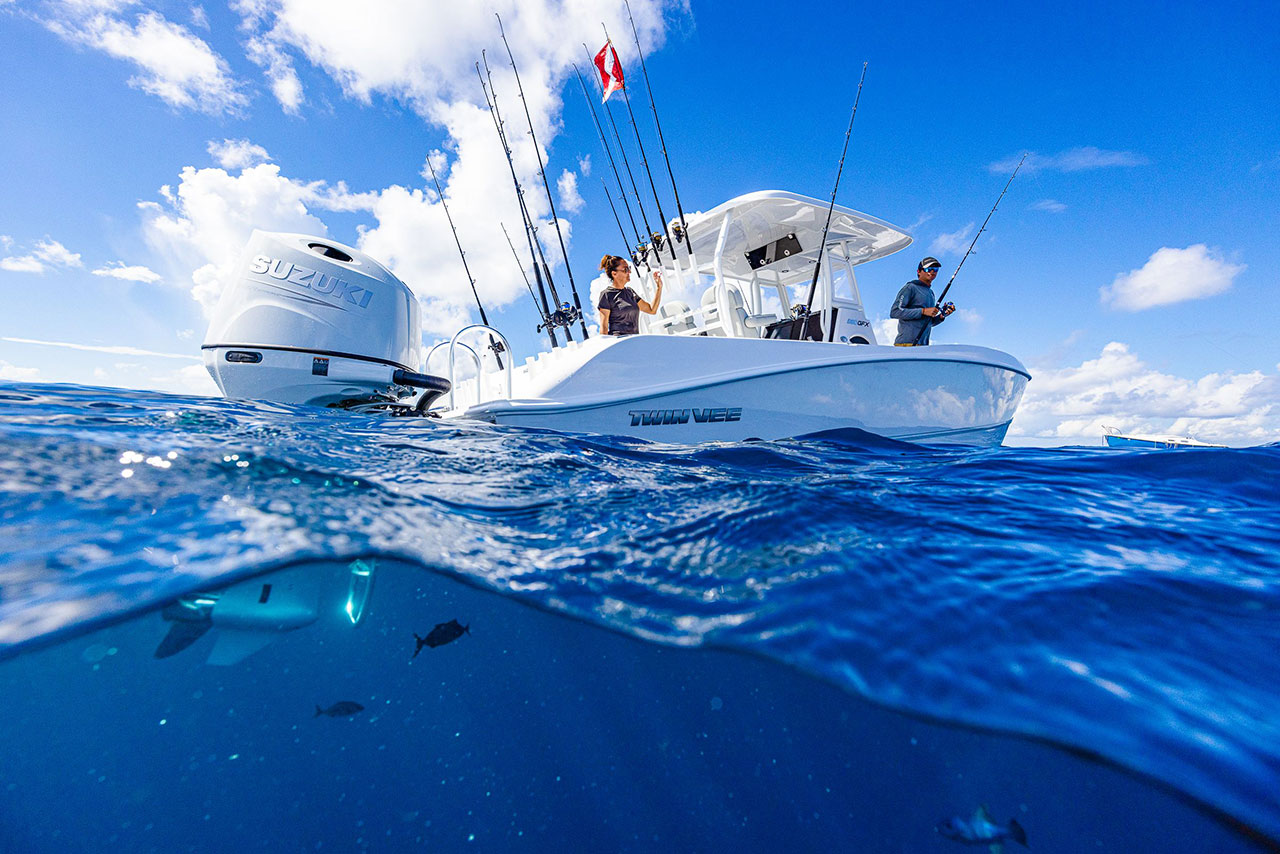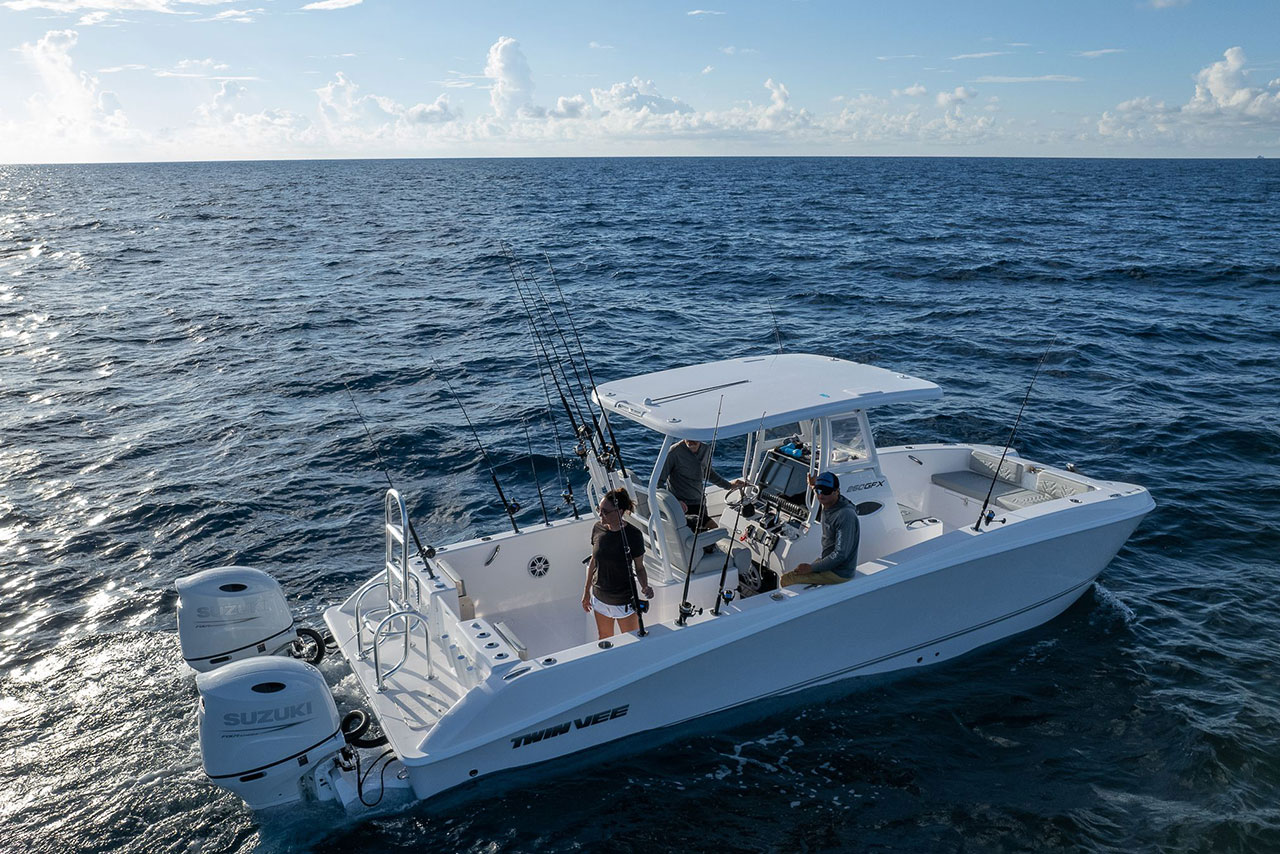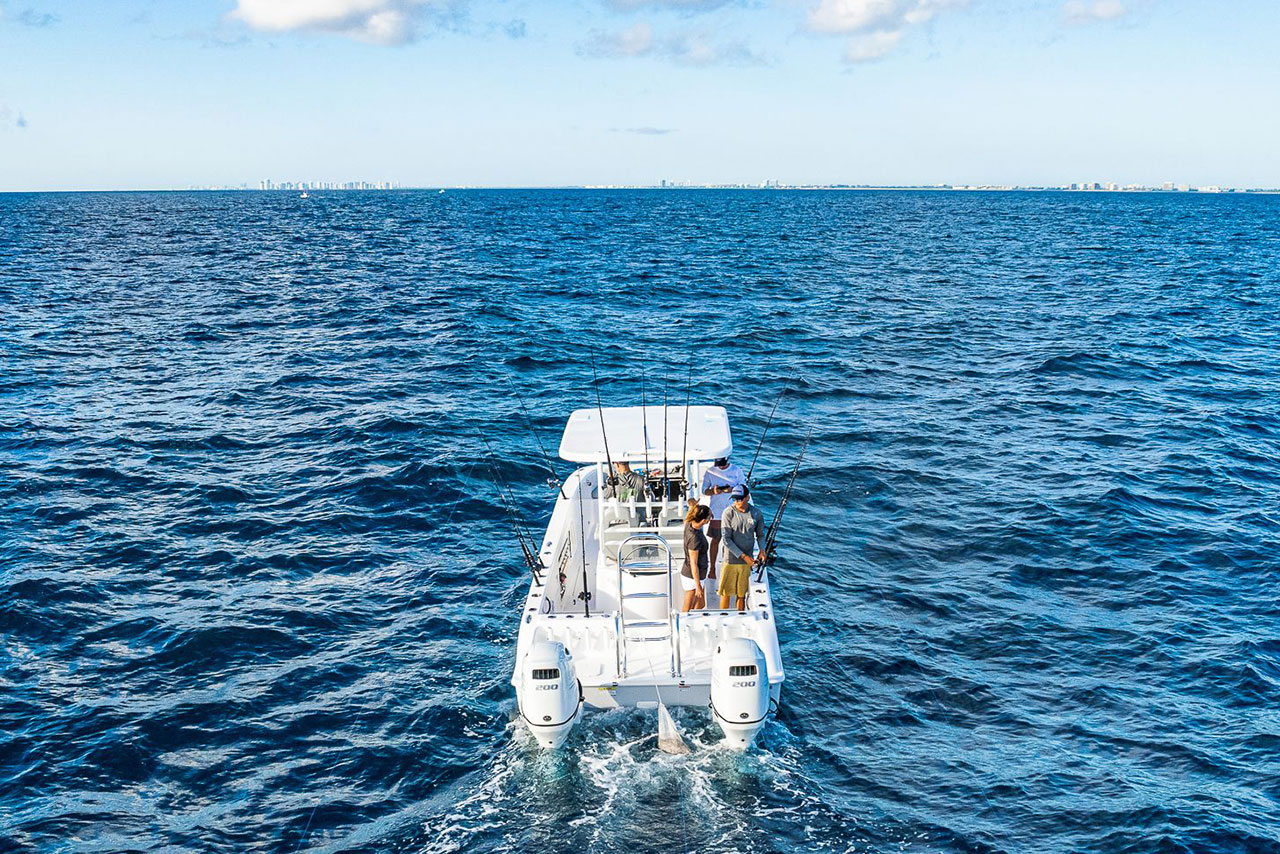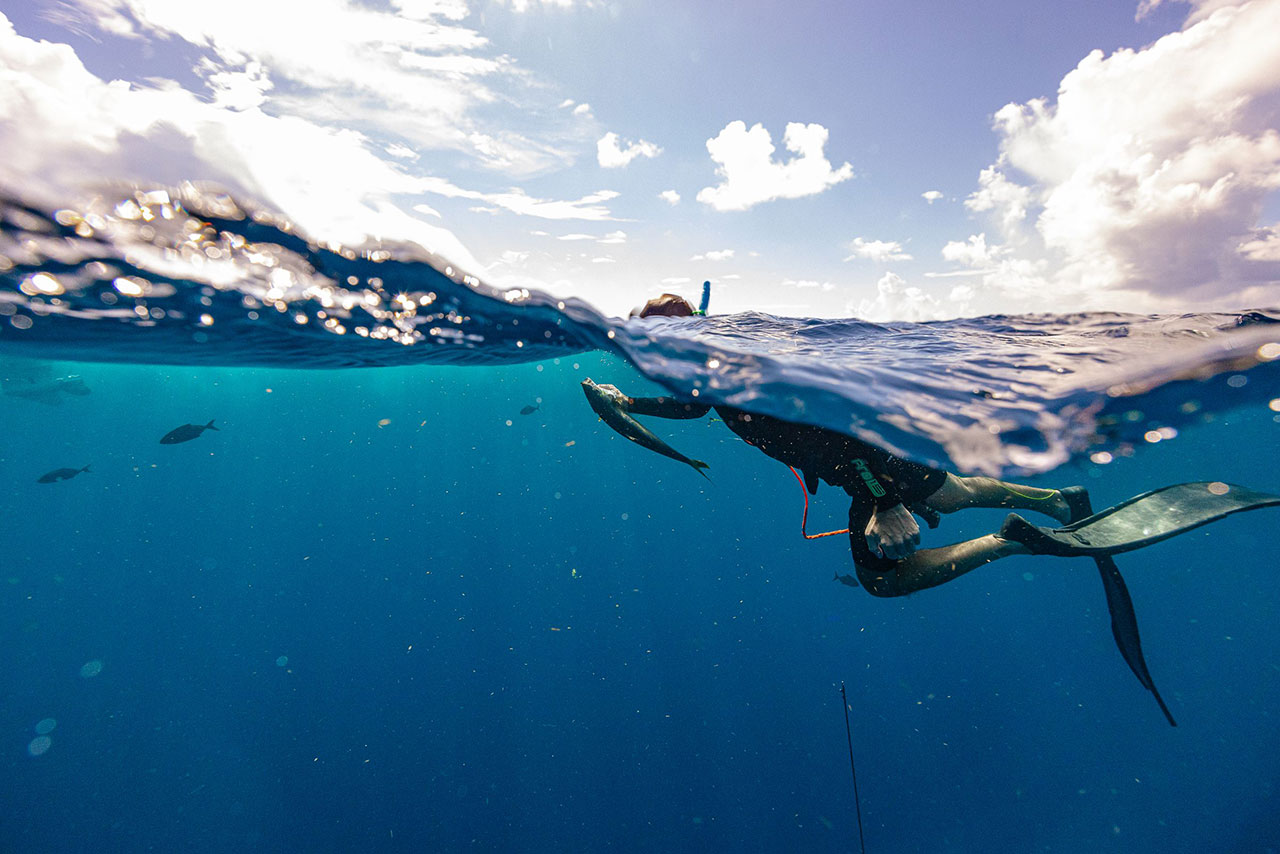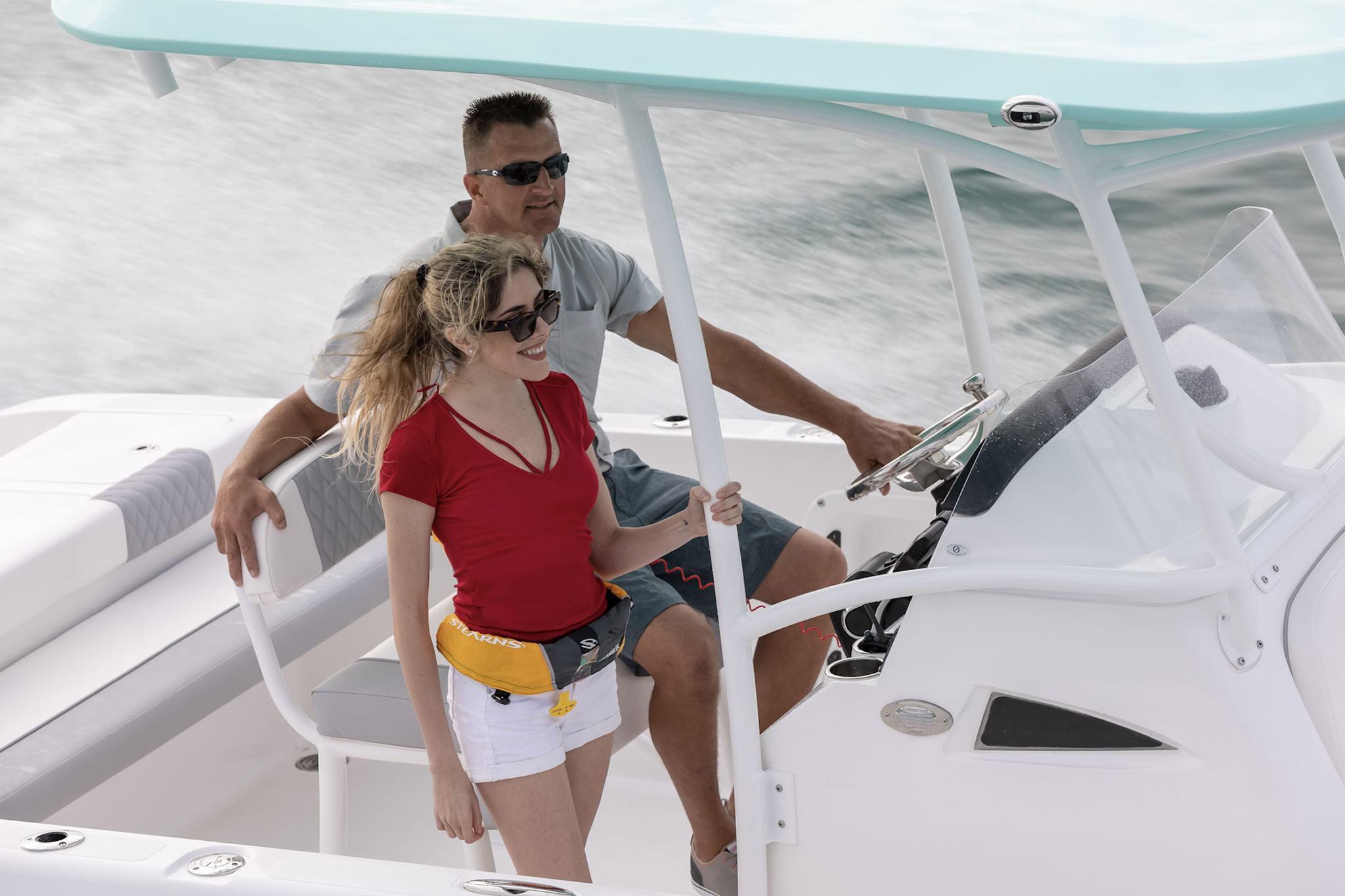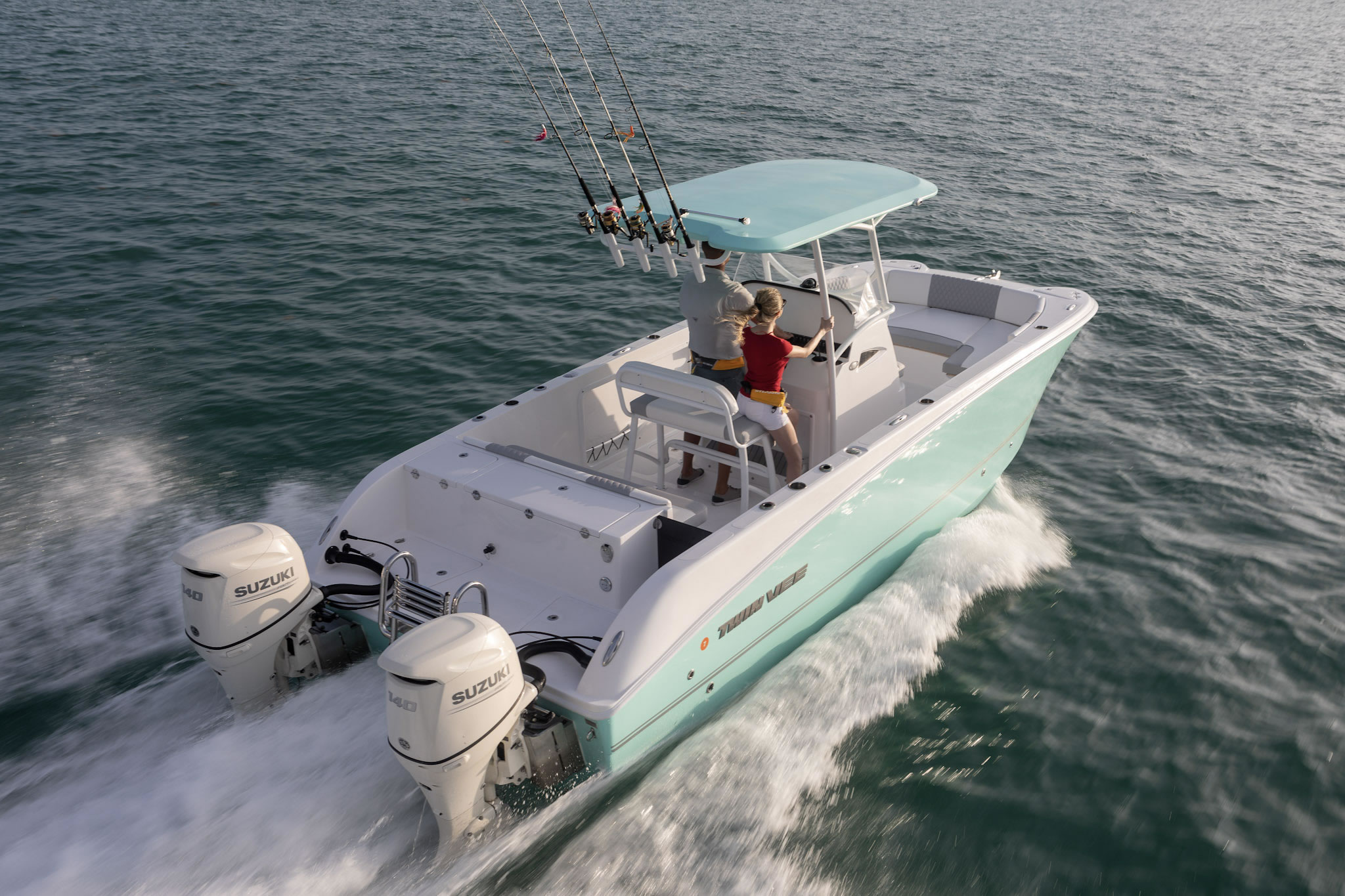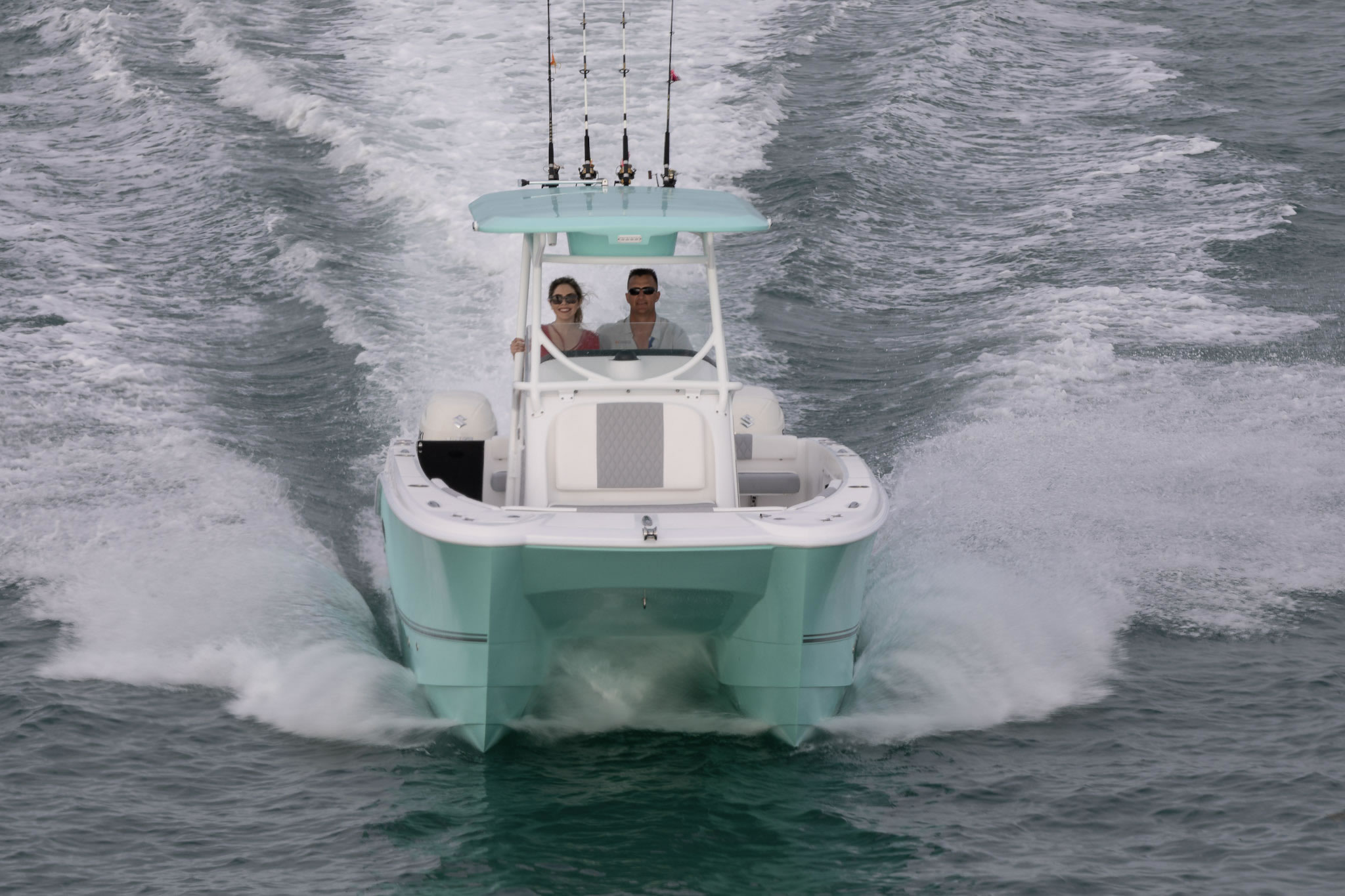Twin Vee Powercat Ride Quality Explained

When you step aboard a Twin Vee, the first thing you notice is how steady everything feels. The deck barely shifts when passengers move, drinks stay put, and the horizon remains level even when waves build. This is naval engineering in action. Twin Vee’s power catamarans are designed to deliver a stable, predictable ride through advanced hull geometry, wide-beam balance, and twin-hull hydrodynamics. Let’s explore the science that gives every Twin Vee its remarkable powercat ride quality, stability and offshore comfort.
Beam-to-Length Stability: A Wider Foundation for Balance
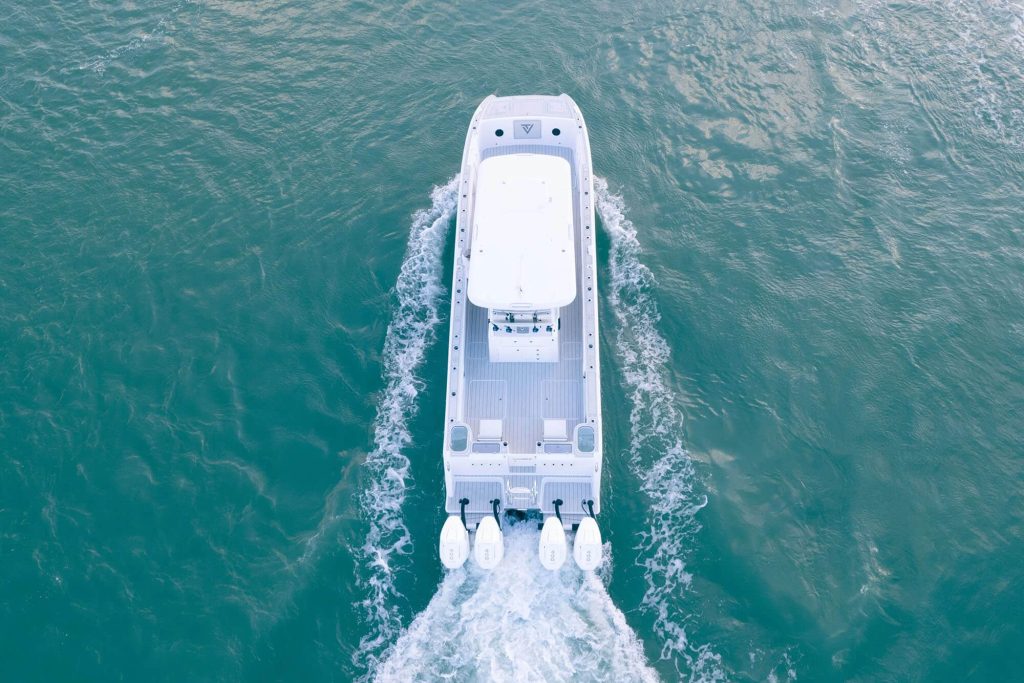
A catamaran’s stability begins with its beam. Twin Vee hulls are spaced wide apart, creating a footprint that can be up to 40 percent of the boat’s total length. This beam-to-length geometry increases the vessel’s metacentric height (GM), which is the technical measure of a boat’s ability to resist rolling.
Because of this wide stance, Twin Vee powercats experience up to 70–80 percent less roll amplitude than comparable monohulls. That means less side-to-side motion when drifting, trolling, or anchored offshore. When your fishing crew moves to one side or waves roll in from the beam, the boat settles quickly and resists the exaggerated sway that causes seasickness on many deep-V boats.
This stability makes every Twin Vee feel like a much larger vessel, even at rest.
Soft Vertical Response: Comfort Through Independent Hulls
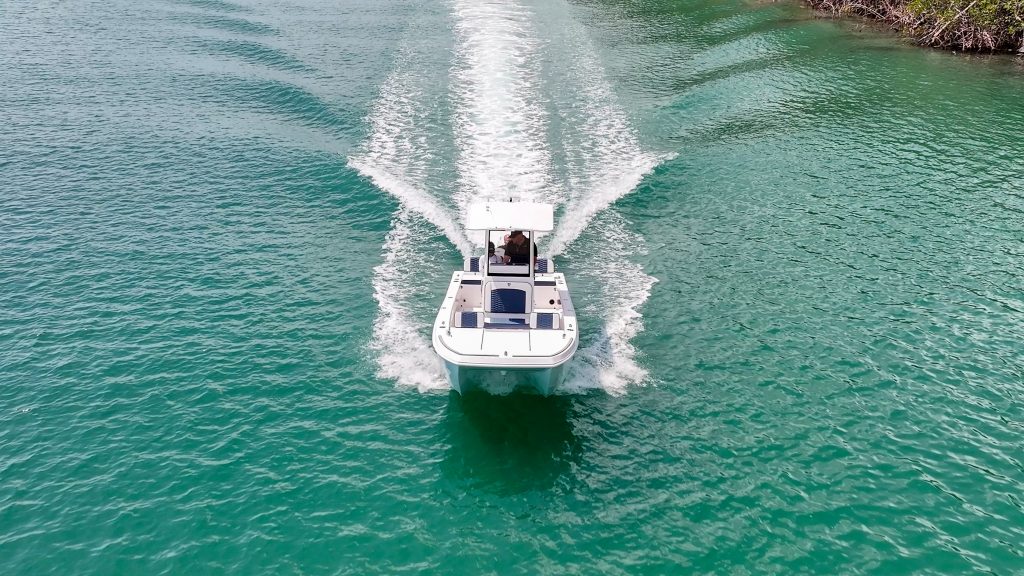
In addition to lateral stability, Twin Vee’s twin hulls smooth out vertical motion. Each hull cuts through the water independently, so when one encounters a wave crest, the other often meets a trough. This out-of-phase movement dramatically reduces synchronized vertical acceleration, which is the up-and-down pounding motion that tires out passengers and stresses equipment.
As a result, the ride feels softer, smoother, and more controlled. Instead of slamming through waves, Twin Vees move gracefully, maintaining speed while protecting the hull and everyone on board. Whether you are running through wind chop, crossing wakes, or facing an offshore swell, the hulls share the work equally and keep you comfortable.
Independent Vector Thrust: Precision Control at Low Speed

Another reason Twin Vee powercats inspire confidence is how easily they maneuver. With two engines mounted wide apart, each motor can deliver independent vector thrust. By putting one engine in forward and the other in reverse, you can rotate the boat nearly in place. This technique lets you spin a 34-foot offshore center console catamaran around its own axis without ever touching the wheel.
In tight marinas, near docks, or when positioning over a fishing spot, this control gives you total command. You can pivot, sidestep, or hold a heading even in wind or current. It’s a level of precision that single-engine monohulls simply cannot match. These low-speed advantages contribute to the predictable powercat ride quality that boaters rely on.
Propulsion Redundancy: Safety Built Into the Design

Offshore reliability matters. Twin Vee’s twin-engine configuration gives every owner built-in redundancy. Each engine runs on its own fuel, electrical, and control system. If one powerplant ever experiences a problem, the other can bring you safely back to port.
That kind of security isn’t just peace of mind—it’s a vital safety feature for offshore anglers, families, and charter captains. When conditions change quickly on the ocean, redundancy makes the difference between inconvenience and danger.
Balanced Propulsion Dynamics: Equal Power, Equal Control
Every Twin Vee benefits from symmetrical thrust lines that cancel out torque reaction. On a single-engine monohull, propeller torque often causes the boat to pull slightly to one side, requiring constant steering correction. With twin engines spaced widely apart, torque forces balance perfectly. This design is one of the main reasons Twin Vee owners immediately feel the difference in powercat ride quality compared to V-hulls.
This alignment removes steering bias, eliminates rolling moments, and gives the helm a light, natural feel. The result is a boat that tracks straight without fighting the wheel, even in strong crosswinds or beam seas.
Minimal Transitional Bow Rise: Better Visibility, Smoother Acceleration
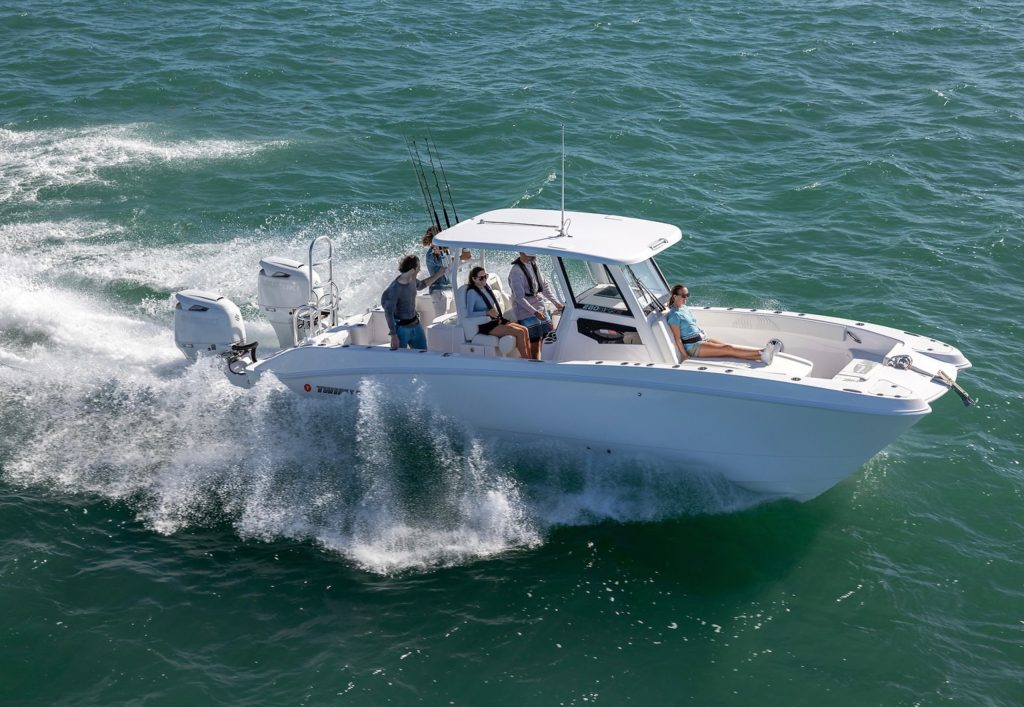
A common issue with deep-V center consoles is bow rise during acceleration. As a monohull climbs over its own bow wave, the front lifts dramatically, momentarily blocking the operator’s view. Twin Vee catamarans behave differently. Their narrow twin hulls displace water laterally rather than vertically, allowing the boat to accelerate with minimal bow rise.
Because the deck stays nearly level, you maintain forward visibility at all times. Passengers stay balanced, and the boat reaches plane faster with less drag. In rough conditions, this translates to better awareness, safer handling, and less stress on the captain.
Lower Vertical Center of Gravity: Stability Through Design
Twin Vee’s engine placement also contributes to its stability. The engines mount far apart on the transom, which lowers the vessel’s vertical center of gravity (VCG). A lower VCG improves roll resistance and enhances control when turning or running in beam seas.
You’ll notice this immediately when making sharp turns. Instead of banking dramatically or feeling like the boat might lean too far, the hulls stay flat and composed. This balance reduces passenger fatigue and keeps the ride predictable at all speeds.
The Real-World Difference: A Ride You Can Trust

All of these design elements work together to produce what Twin Vee owners often describe as a “planted” feeling on the water. The boat doesn’t wander or bounce. It holds its line, absorbs impact, and keeps everyone onboard steady and relaxed. You can fish standing up, set gear, or move around the deck without worrying about sudden shifts in balance. At anchor, a Twin Vee stays in place compared to a traditional monohull and in quartering seas the hull spacing reduces the side roll dramatically.
While the technical side of this performance is impressive, the practical outcome is simple: confidence. You can run harder, stay out longer, and bring your passengers home without fatigue. Families and beginners appreciate the comfort and avoidance of seasickness. Professional anglers value the stability that helps them stay productive in challenging conditions.
Why Stability Means More Than Just Comfort
Stability isn’t just about comfort, it also improves safety, performance, and efficiency. A stable platform allows for more precise handling, especially at higher speeds or when navigating through cross seas. Because the hulls resist roll and pitch, fuel consumption remains consistent and gear stays secure.
Additionally, stability increases your ability to fish or cruise in a wider range of sea states. When other boats slow down or turn for cover, Twin Vee owners often continue comfortably because their hulls maintain composure even as waves grow. That’s not only convenient; it’s a clear demonstration of the hydrodynamic advantage of our powercat ride quality.
Comparing Ride Quality: Catamaran vs. Monohull
To understand just how much stability matters, compare a 34-foot offshore center console catamaran to a similar-length deep-V monohull. The monohull relies on one hull for all lift and buoyancy, so every wave it meets lifts the entire boat. When that wave passes, gravity drops the hull back down, creating a slamming effect. Over hours offshore, that constant impact wears down both passengers and hardware.
In contrast, Twin Vee’s twin hulls cut through waves independently. The boat rides higher, lands softer, and never feels like it’s crashing through the sea. The difference is noticeable the moment you throttle up. You don’t brace for impact—you simply keep moving forward.
The Takeaway
Twin Vee’s ride stability comes from smart engineering, not guesswork. By pairing wide-beam geometry with twin-hull dynamics and balanced propulsion, each model delivers a steady, comfortable ride across any sea state. You can accelerate without losing visibility, drift without excessive roll, and turn sharply without leaning hard to one side.
Because Twin Vee’s design spreads lift, thrust, and buoyancy evenly, every passenger benefits from a smoother experience. The hulls resist rolling, the tunnel softens impact, and the wide stance keeps the boat level and predictable. It’s a design that doesn’t just feel stable—it proves it through performance.
Whether you’re exploring offshore fishing grounds or cruising with family, you can count on a Twin Vee powercat ride quality to deliver balance, safety, and confidence on every run. This is the difference between ordinary boats and the next generation of offshore center console catamarans.
Want to experience the Best Riding Boats on the Water for yourself? Get in touch to schedule a water trial or factory tour today!


